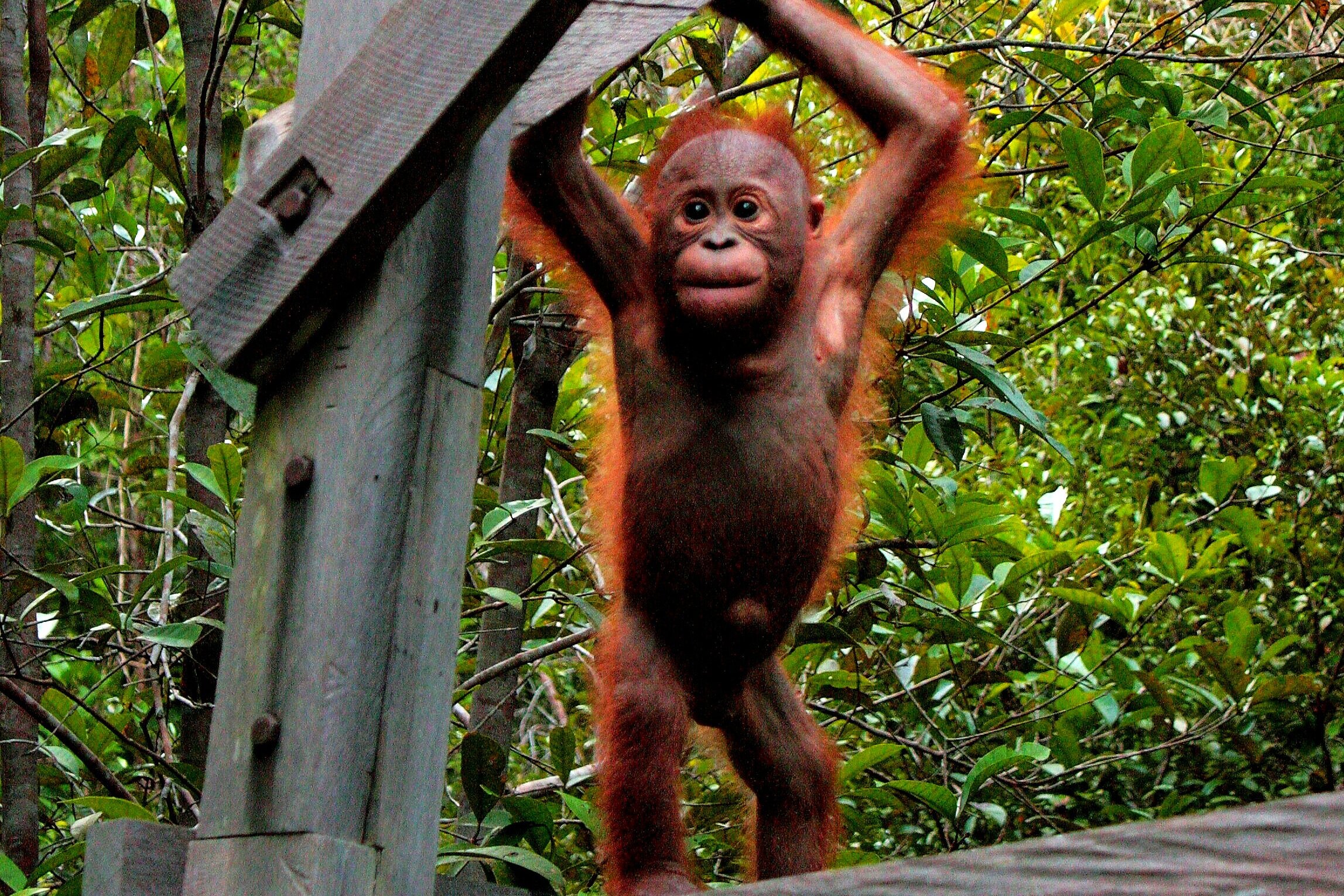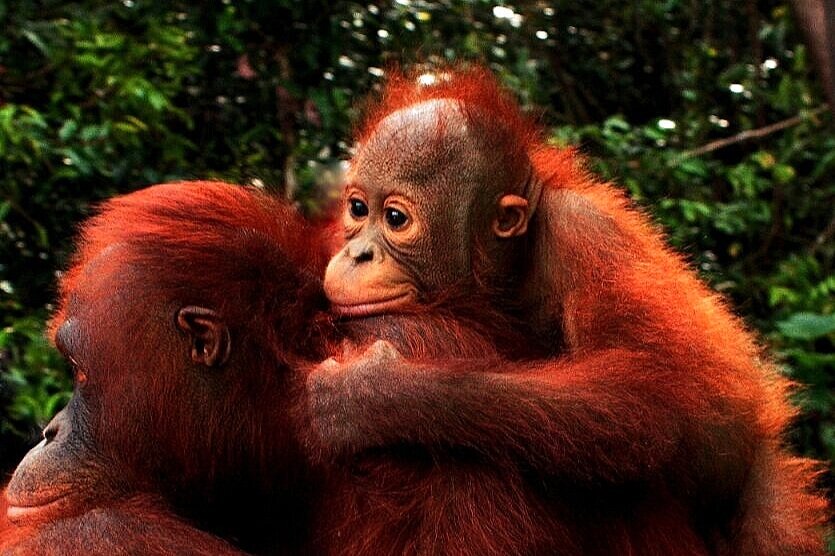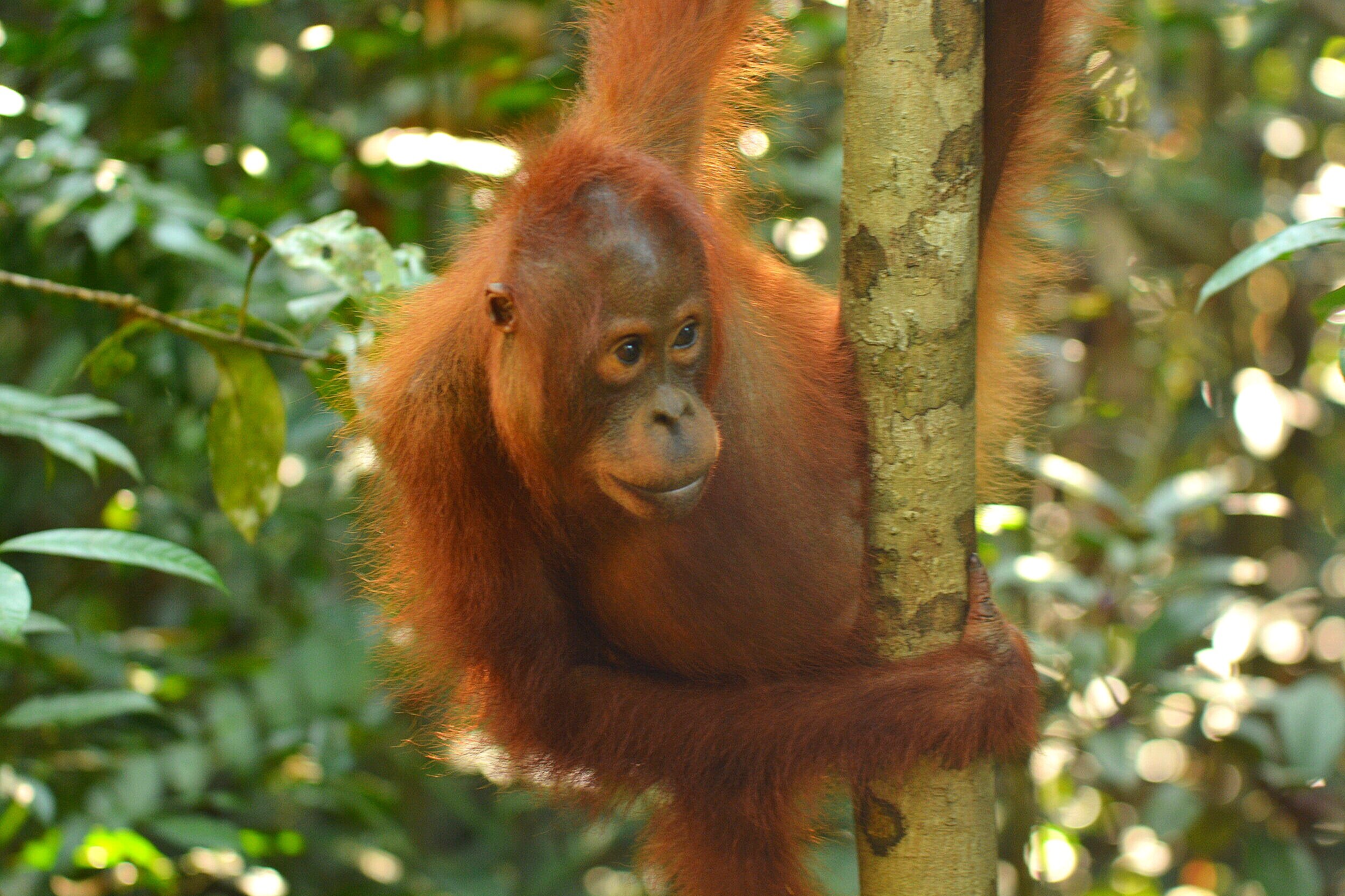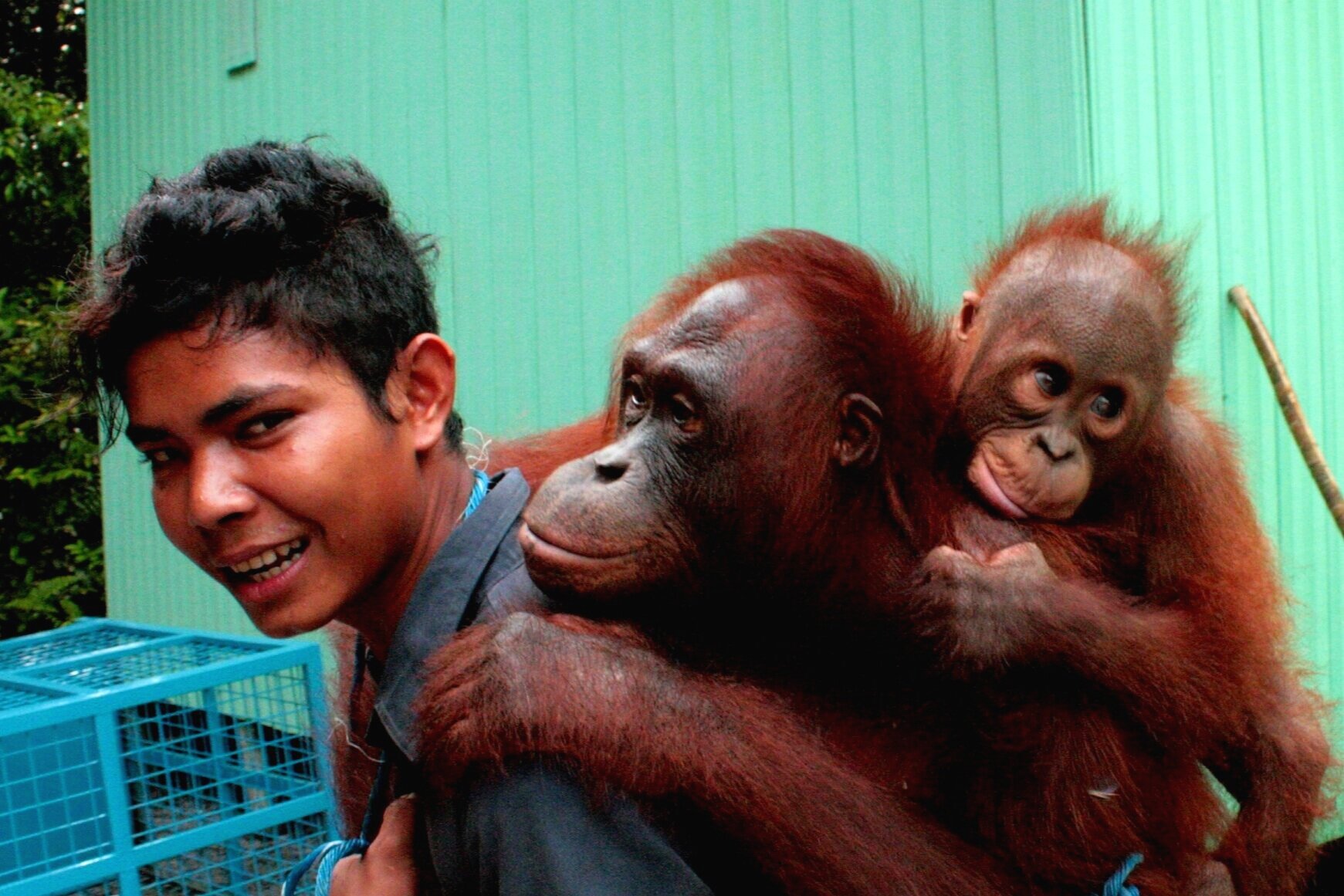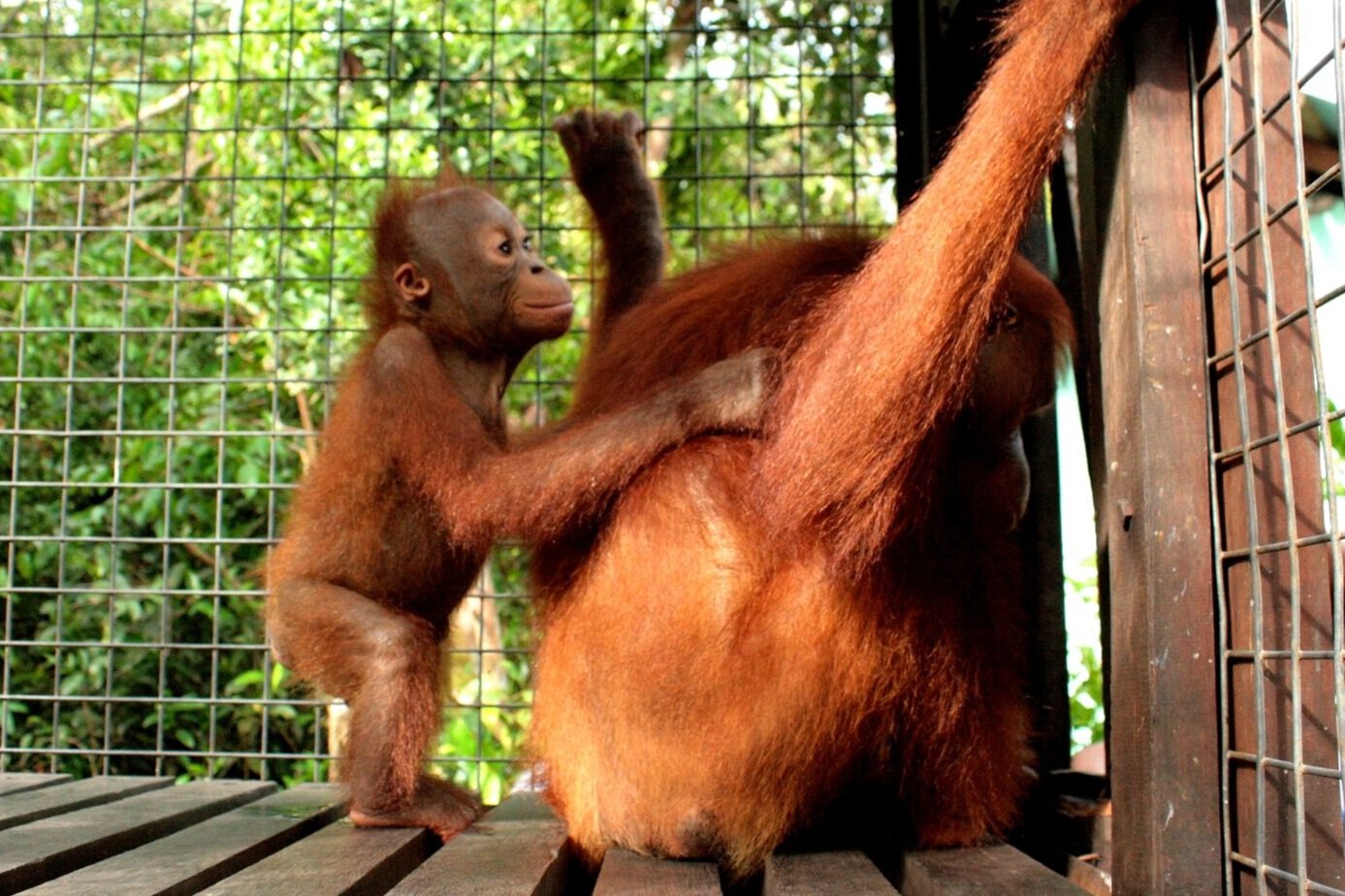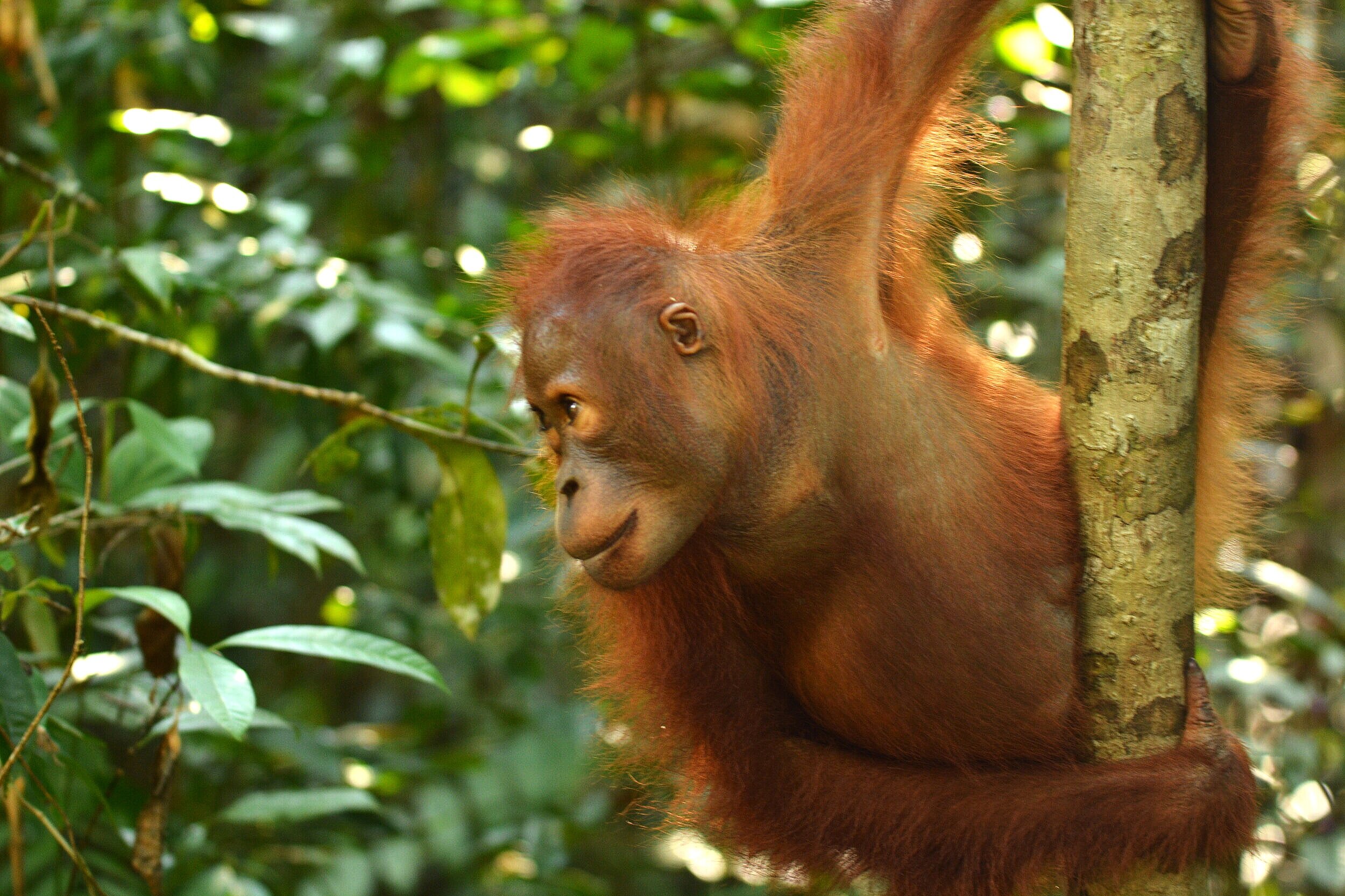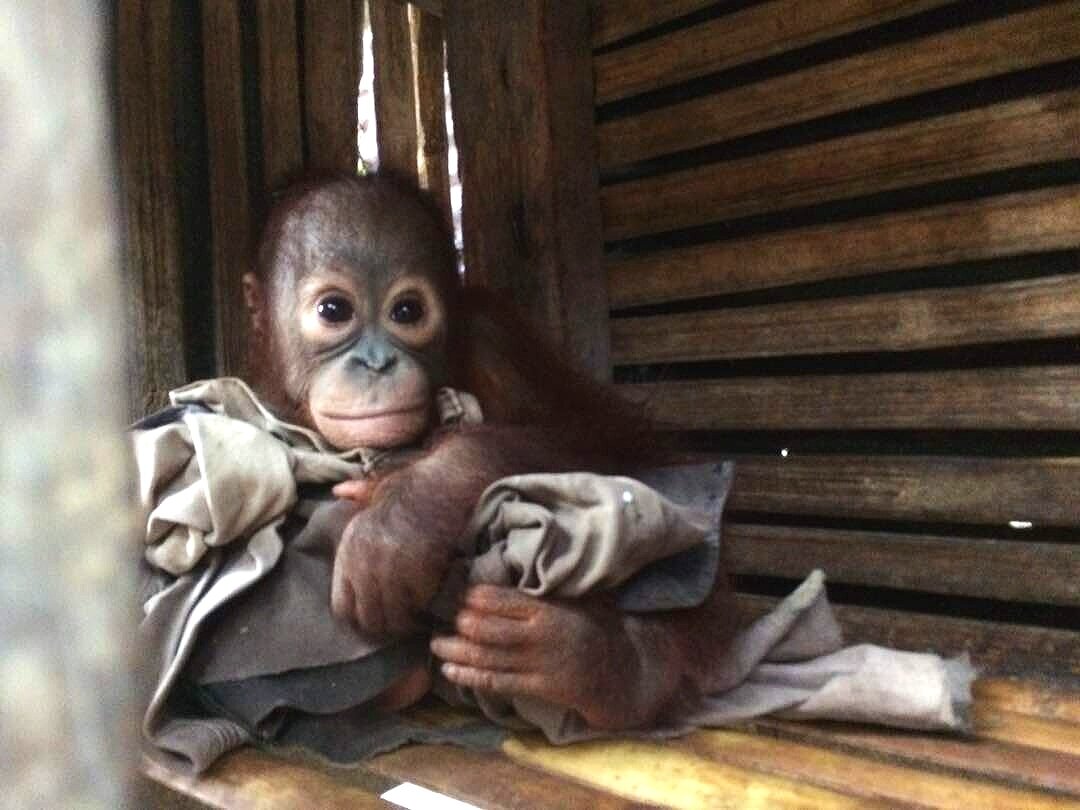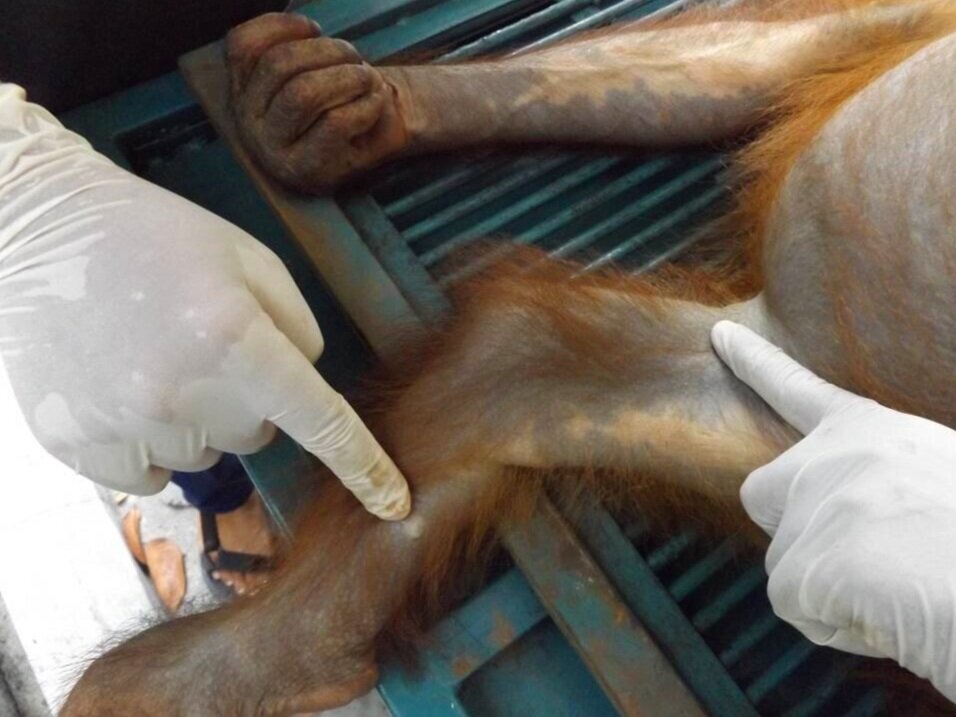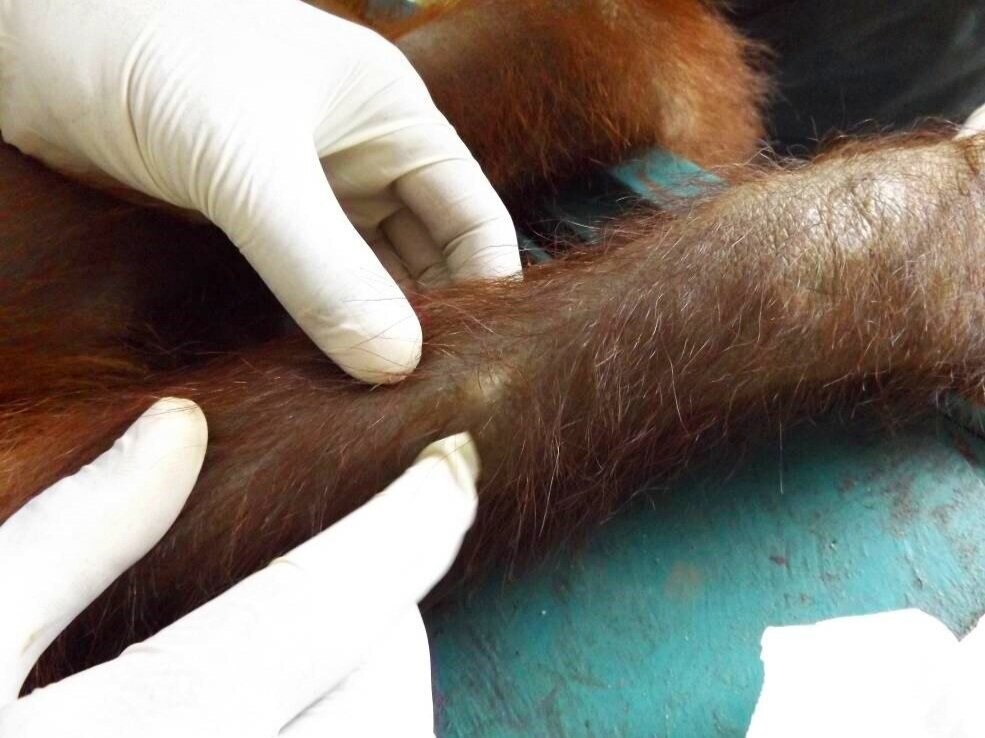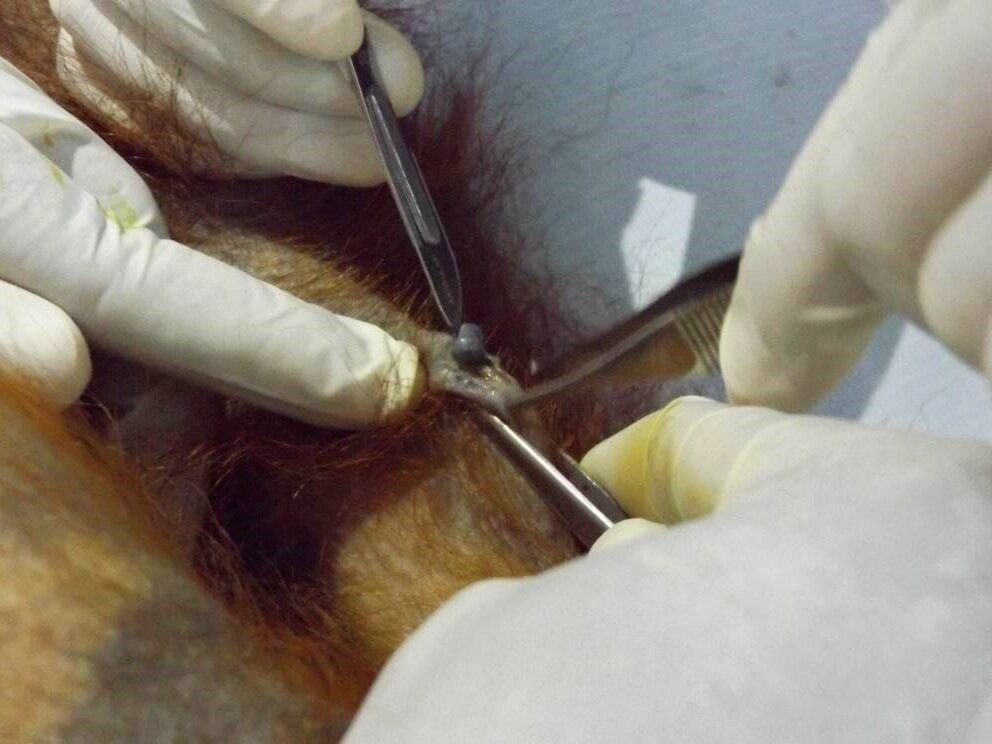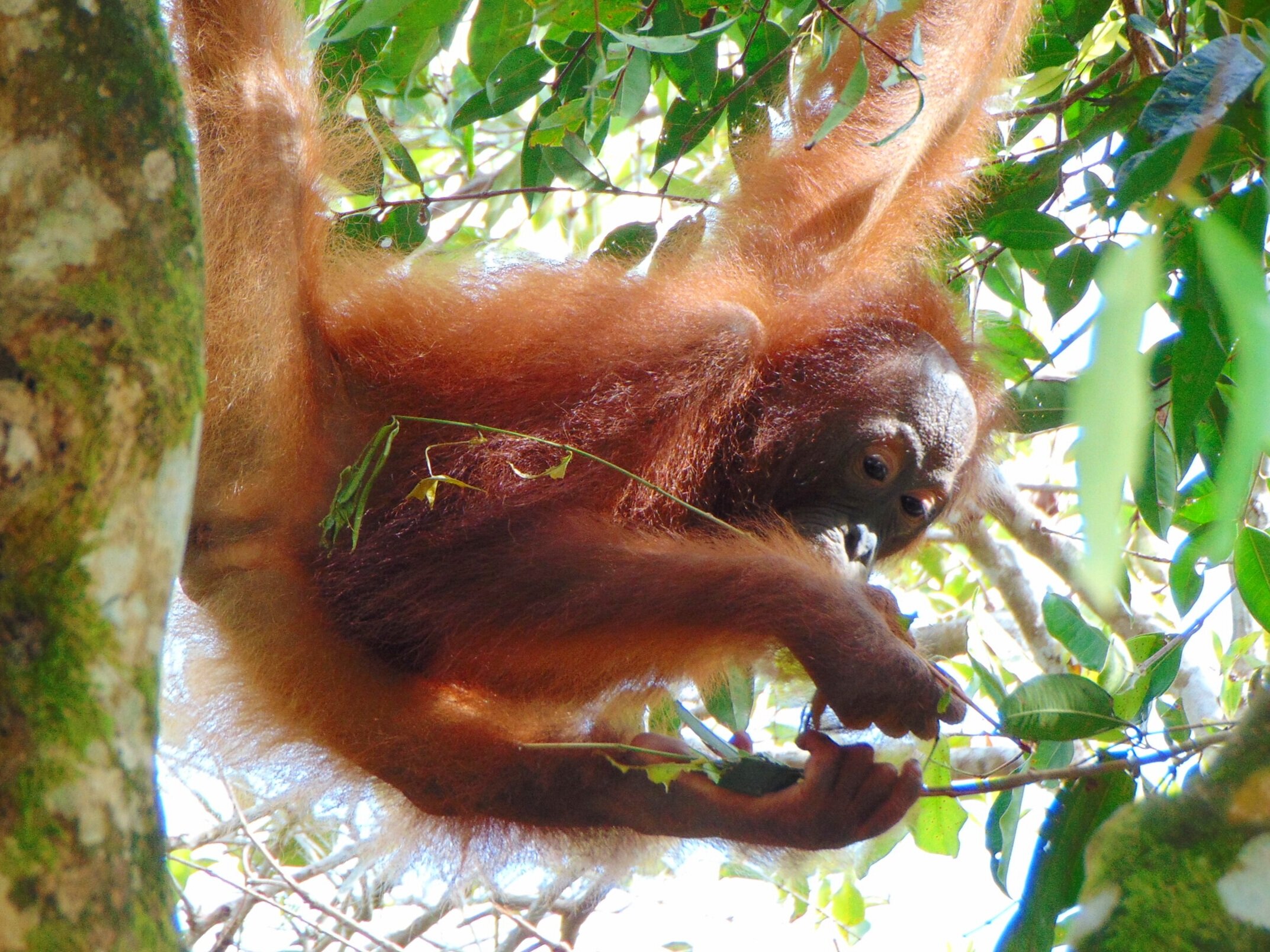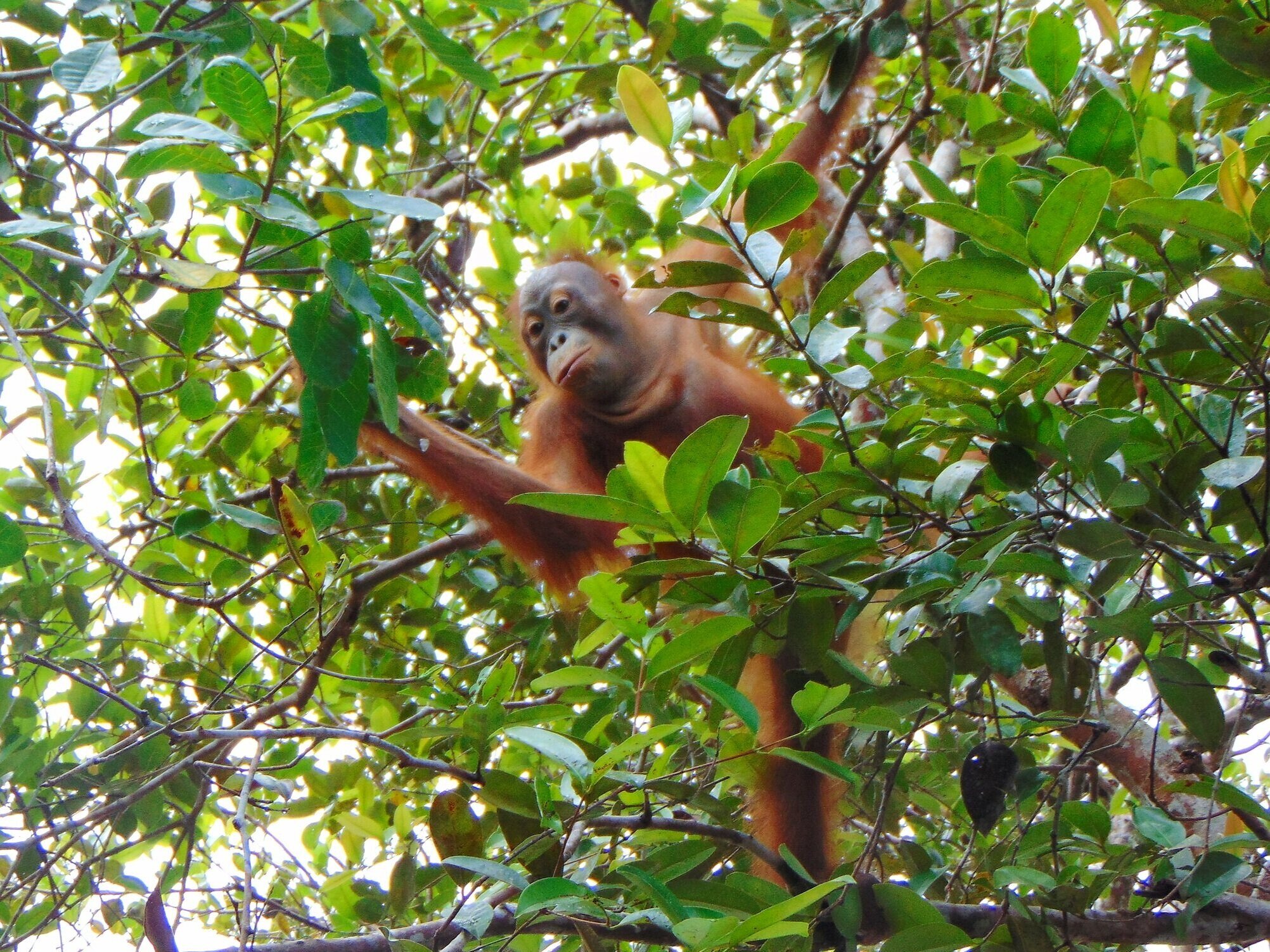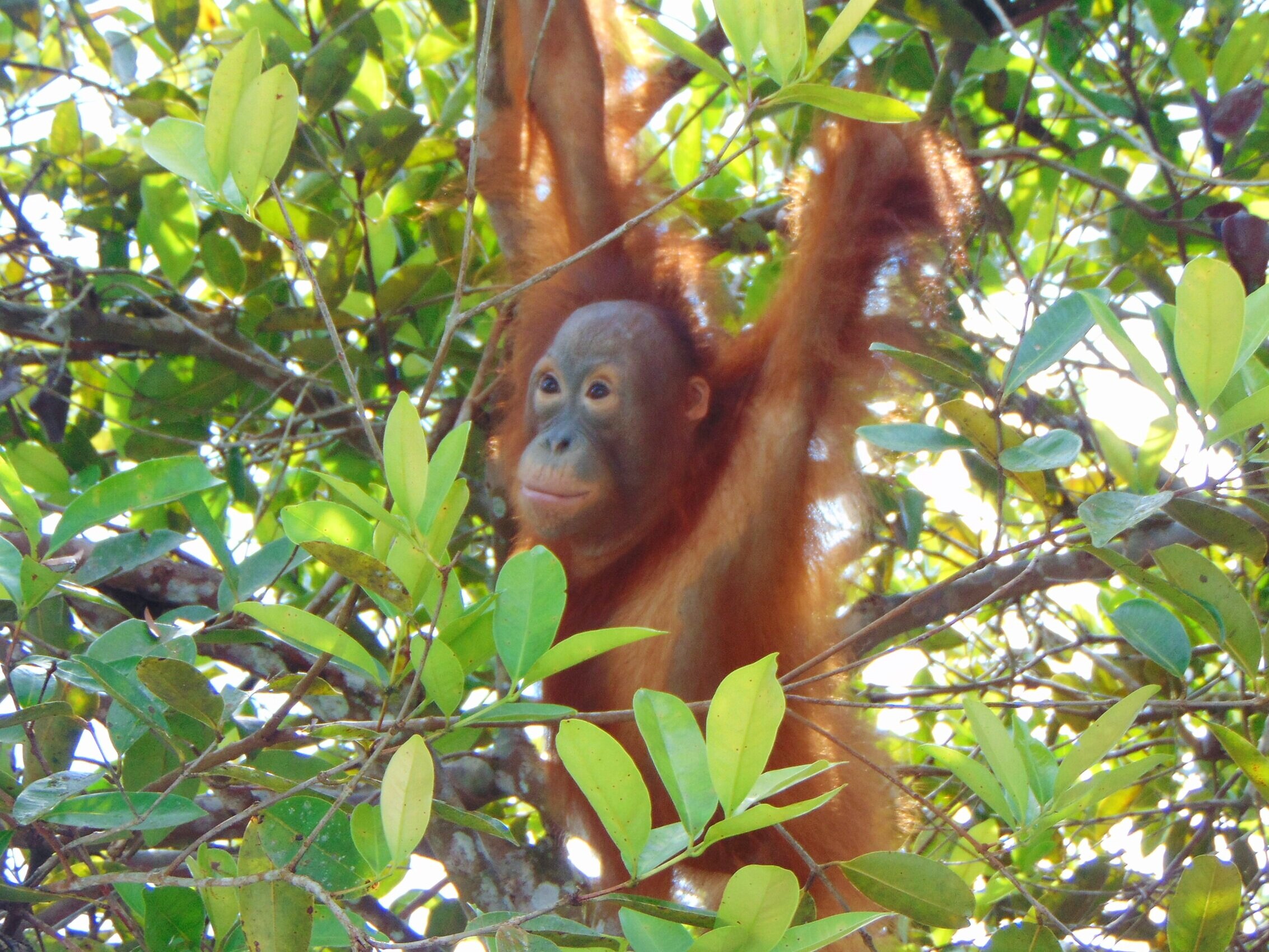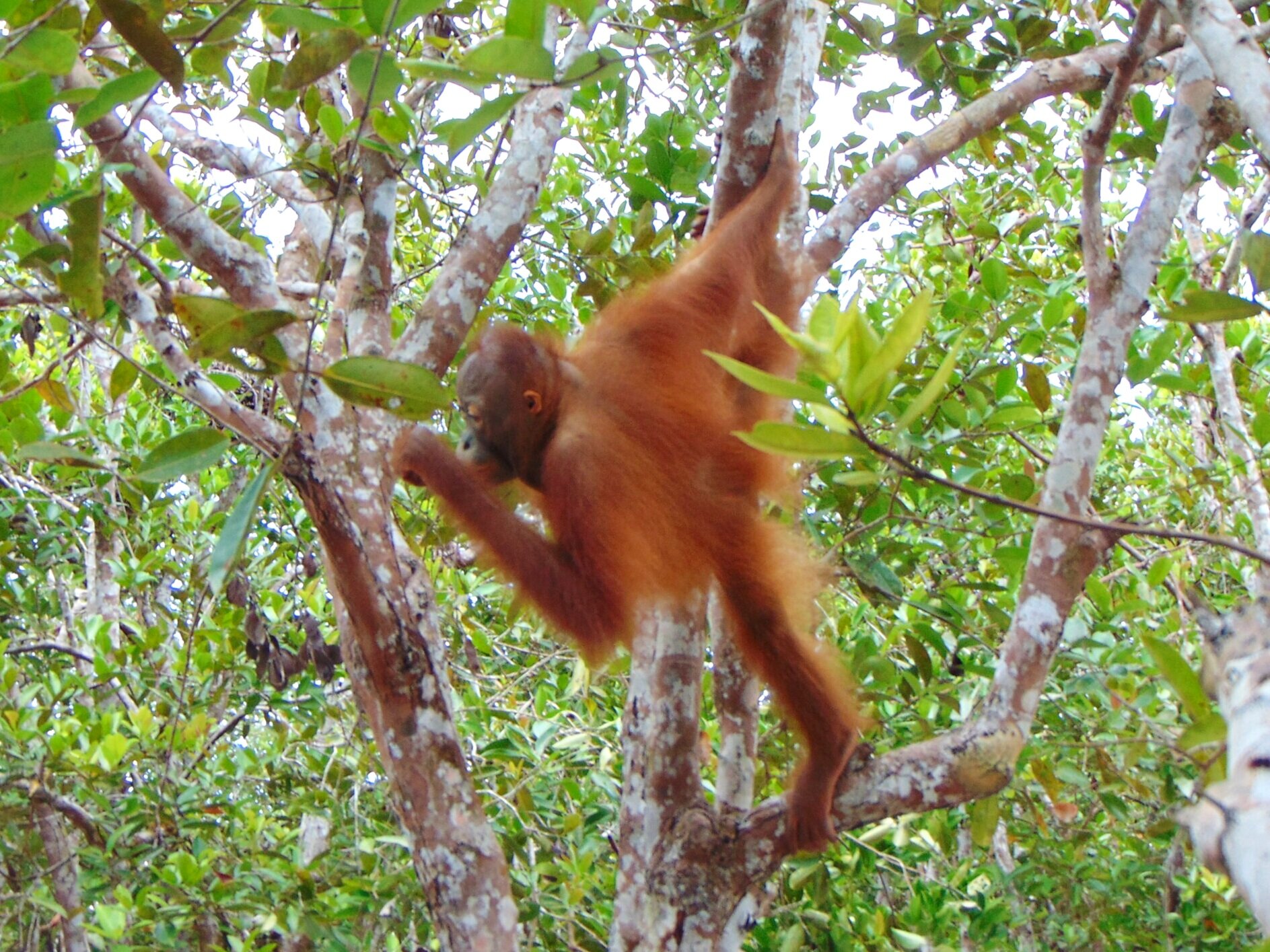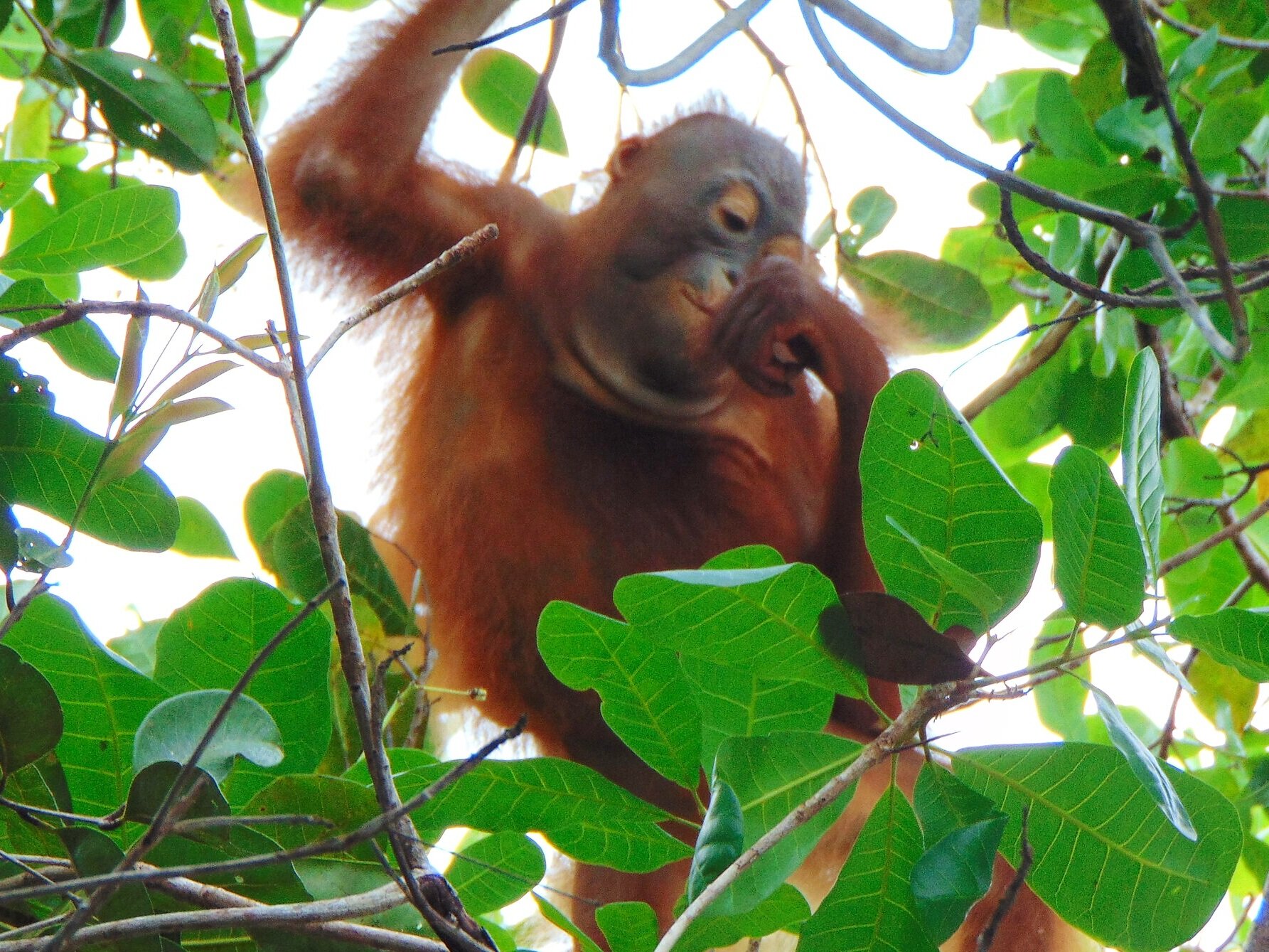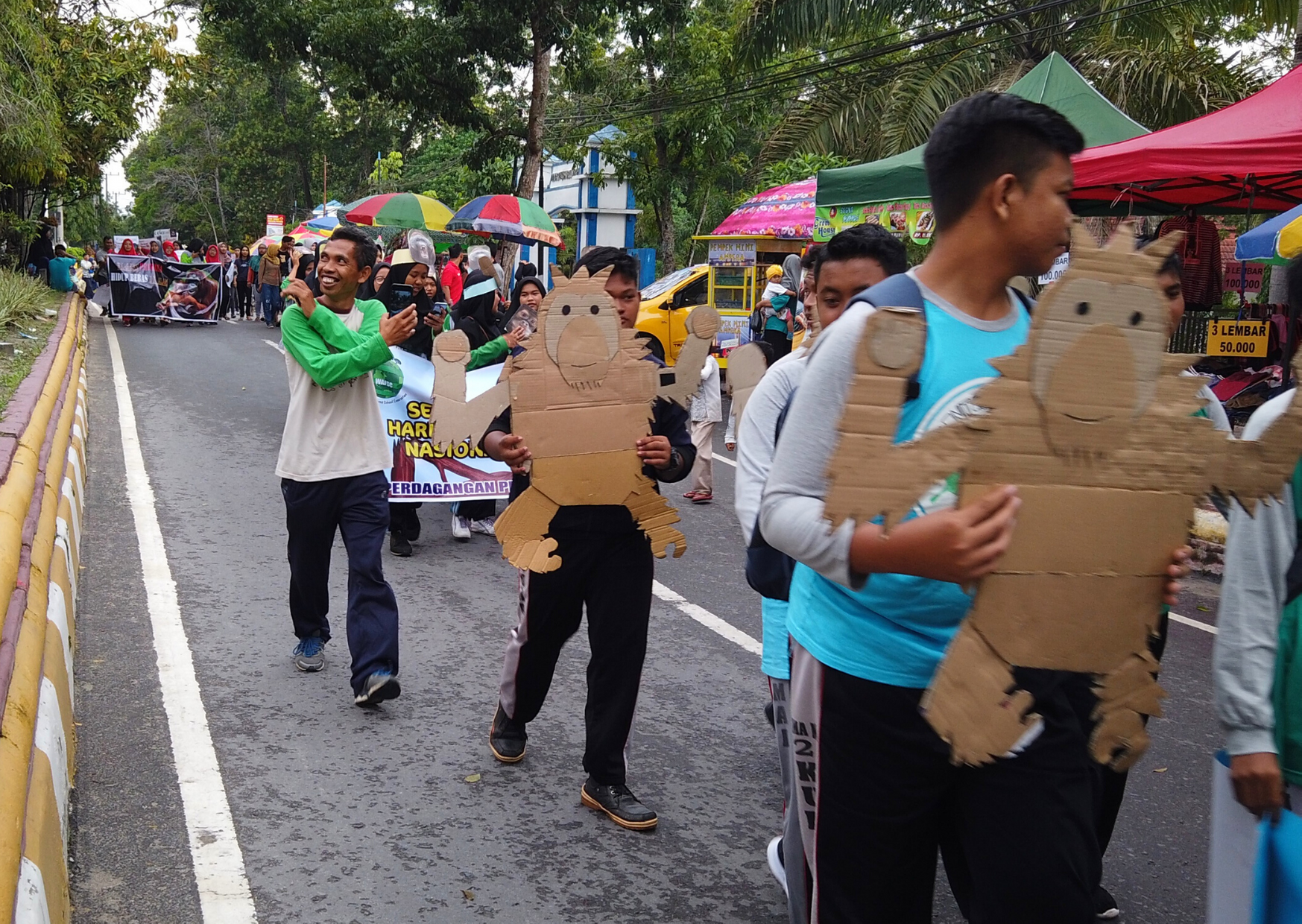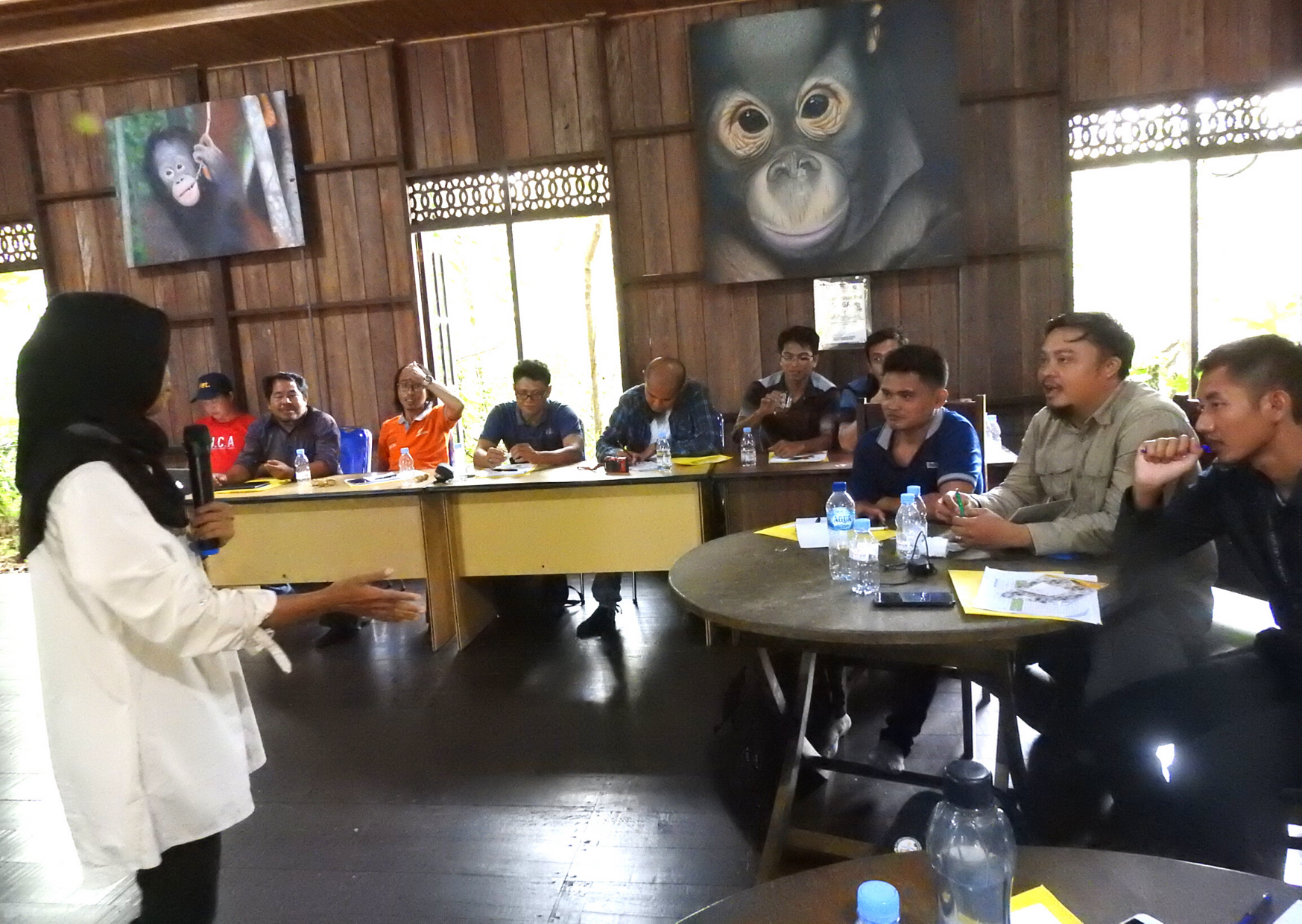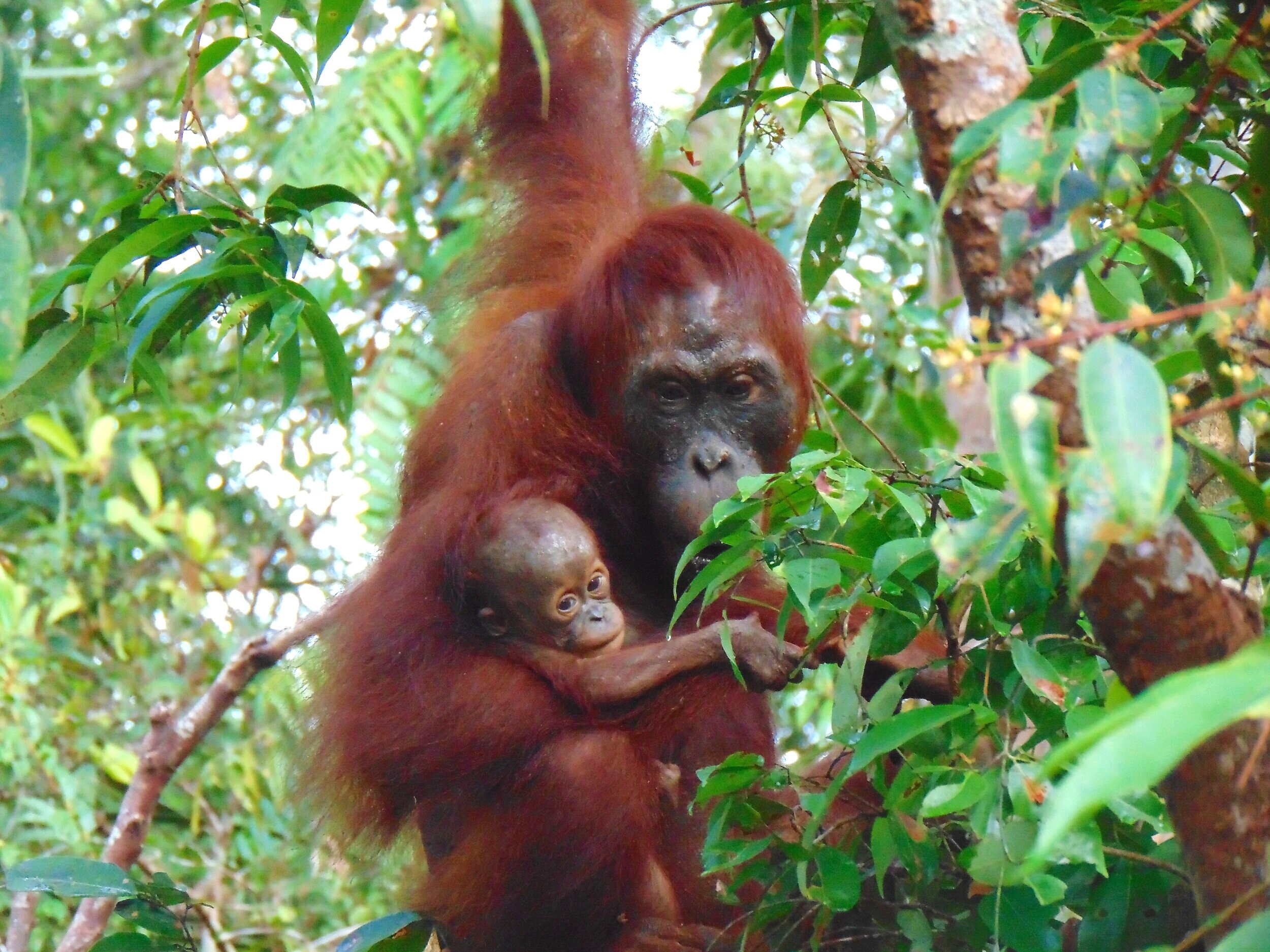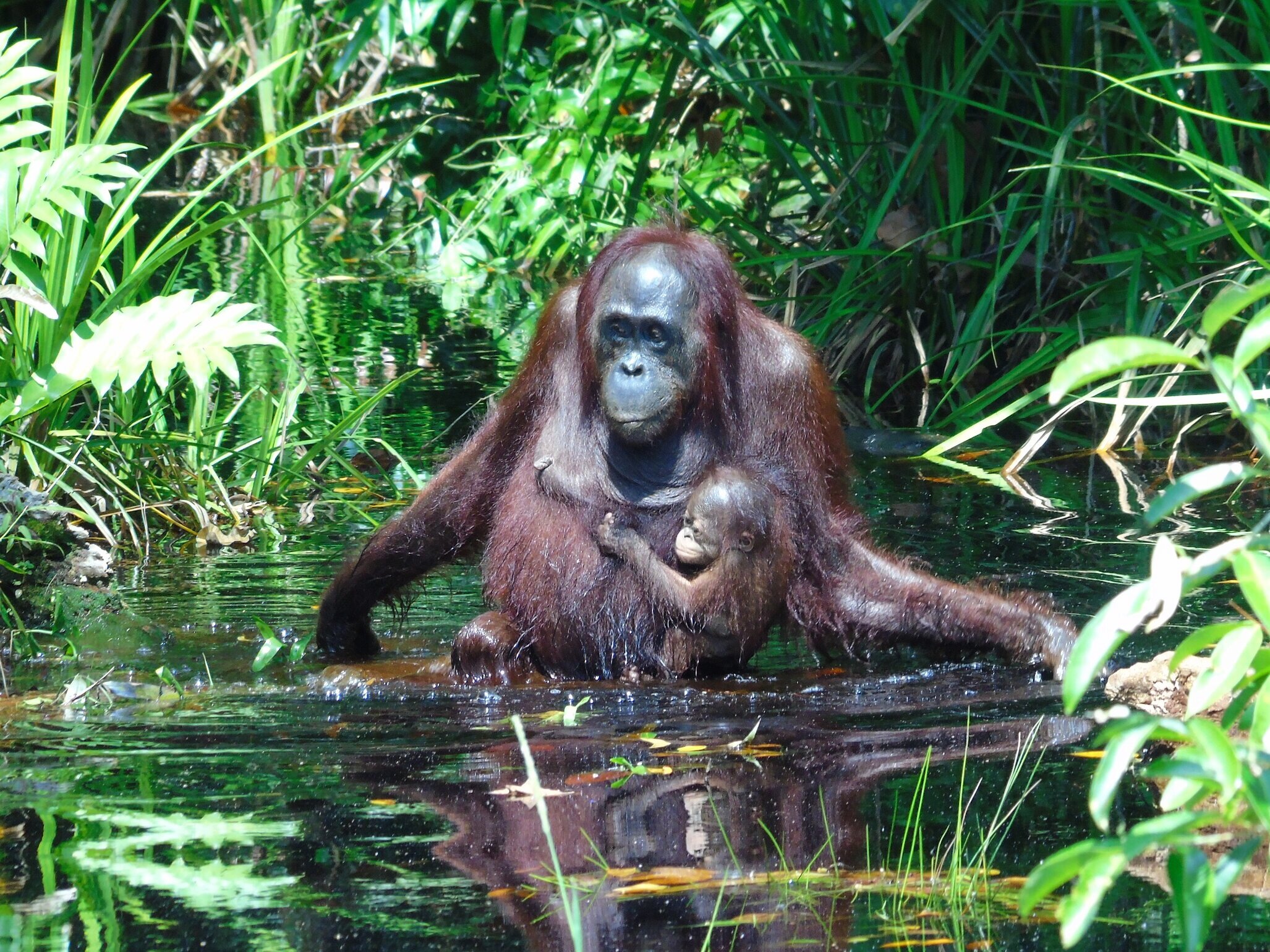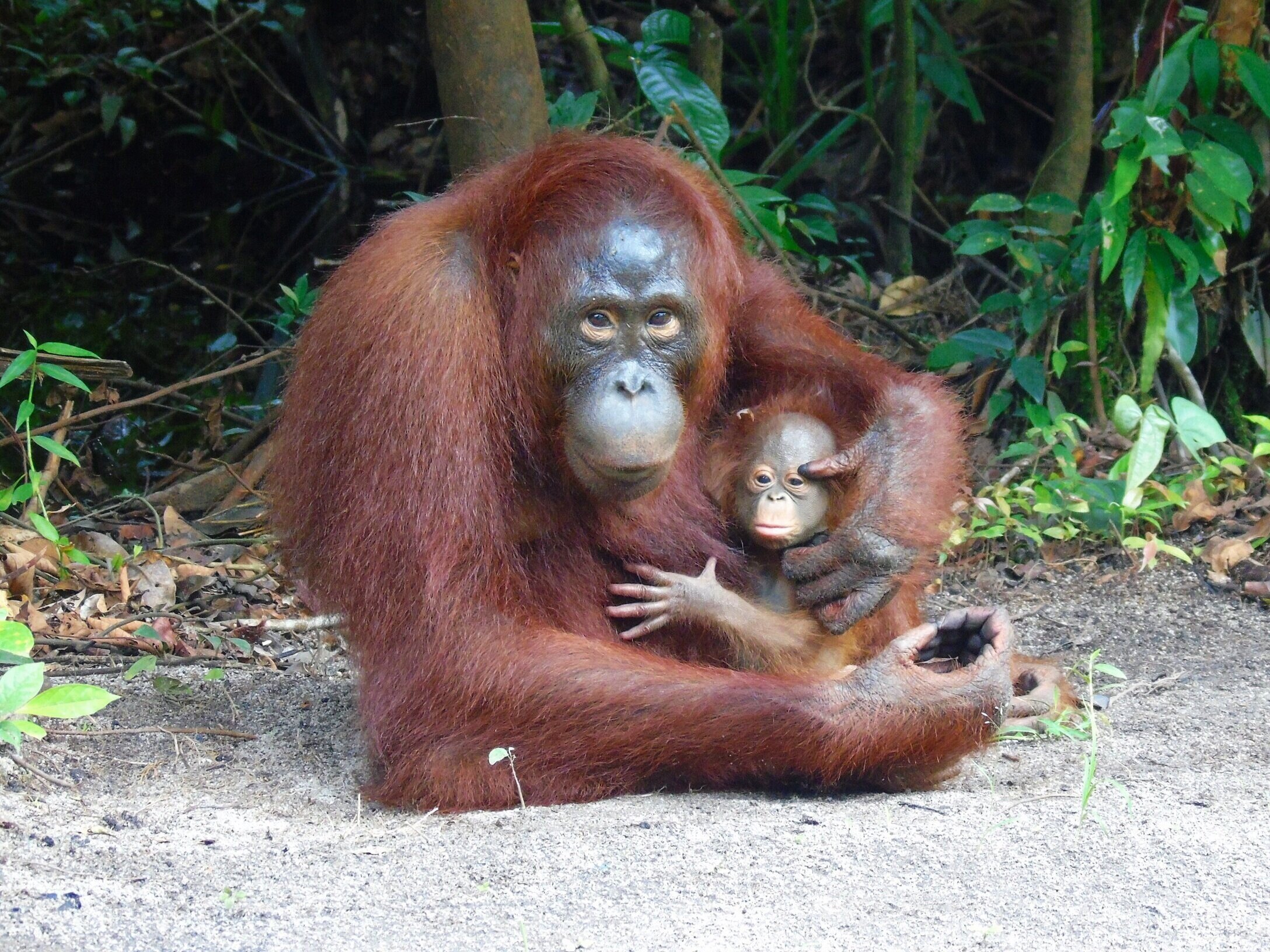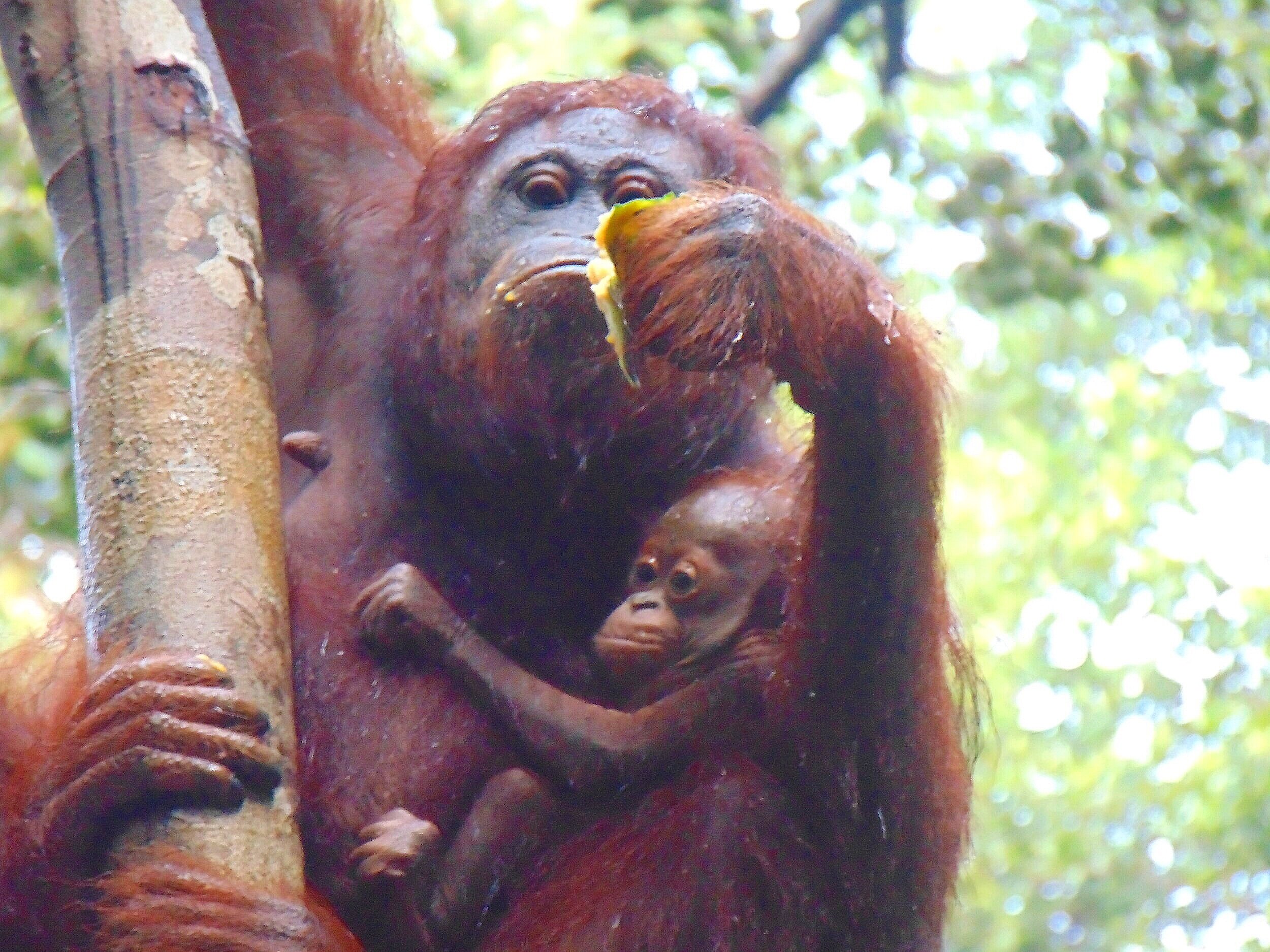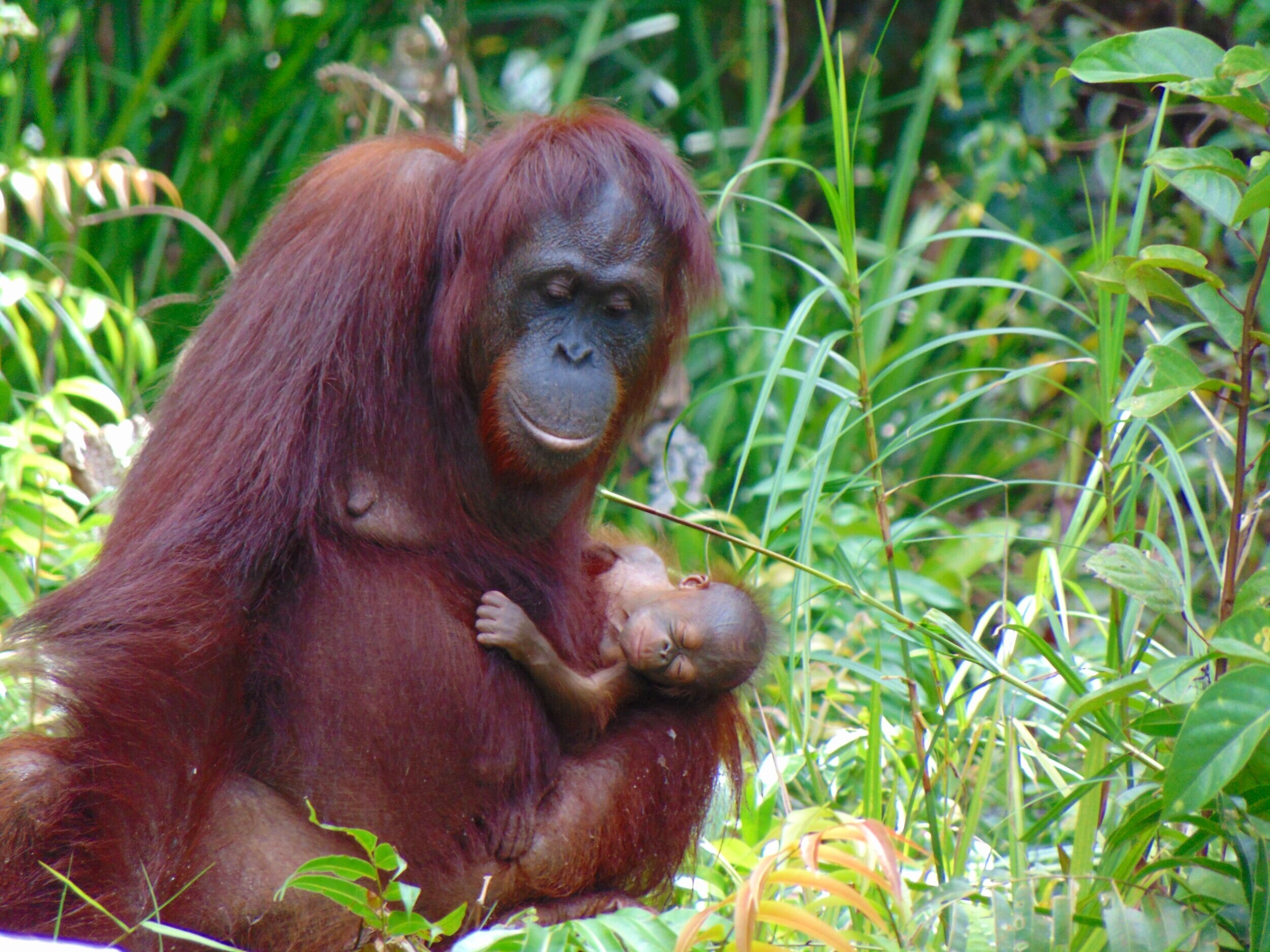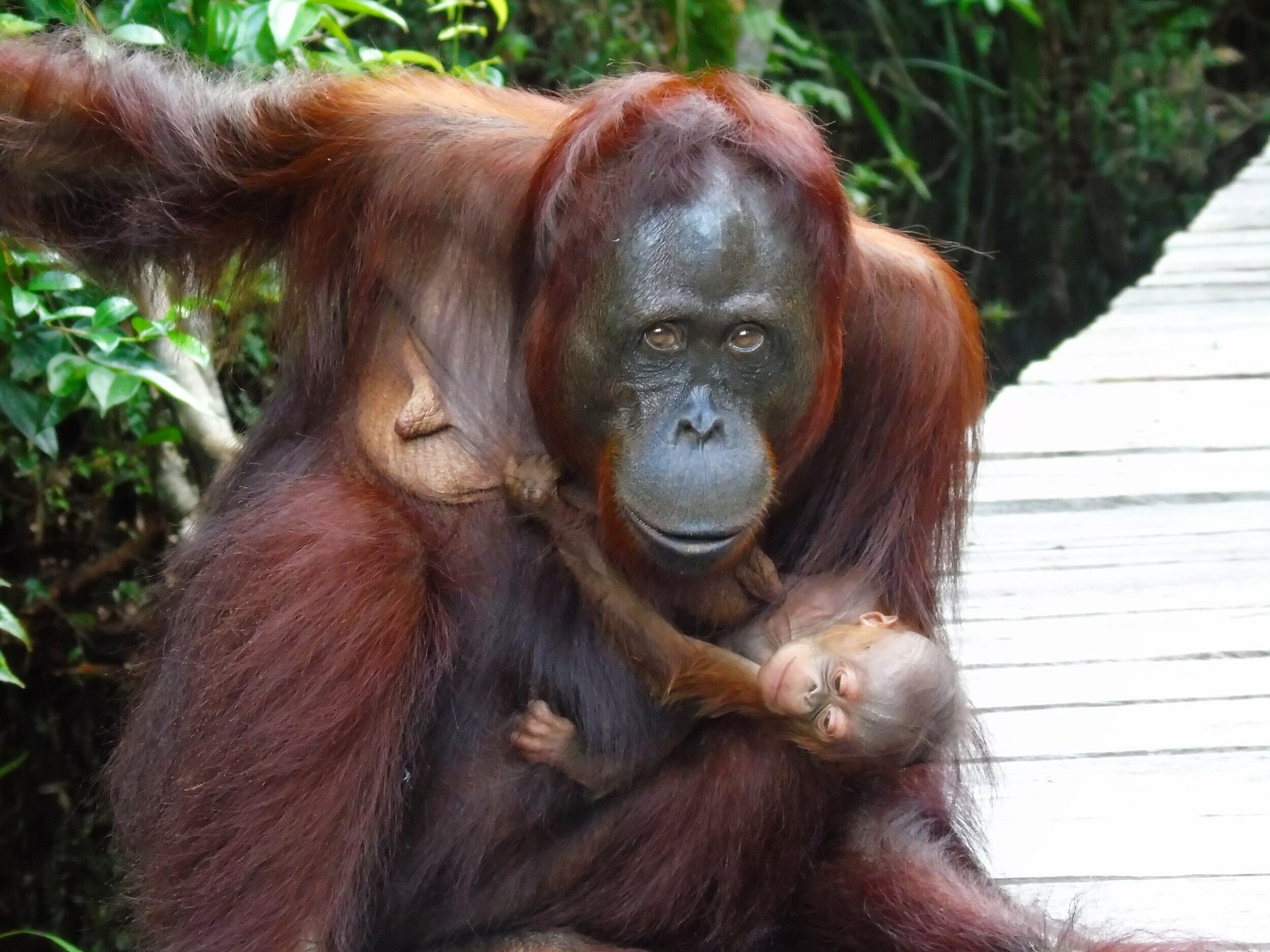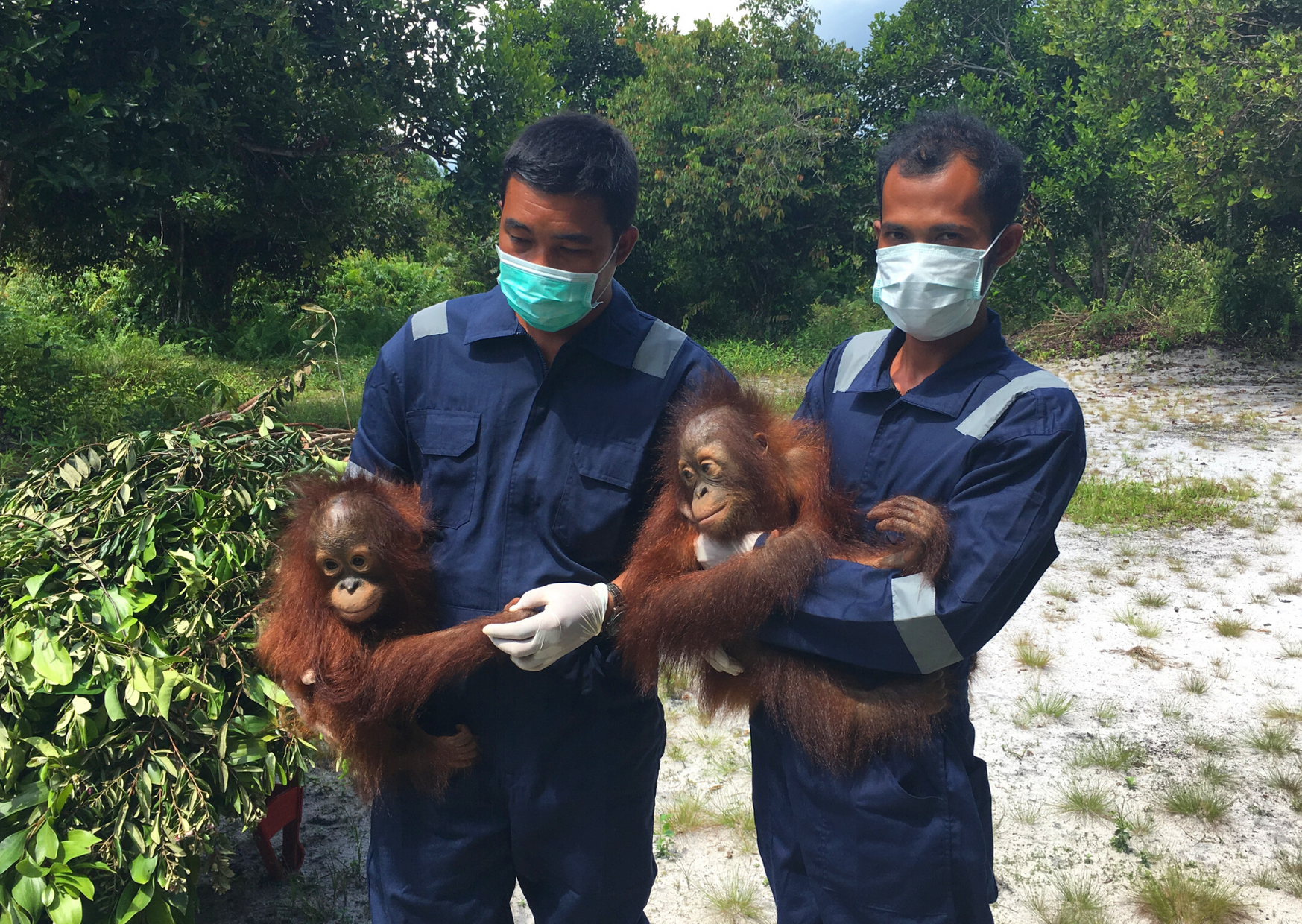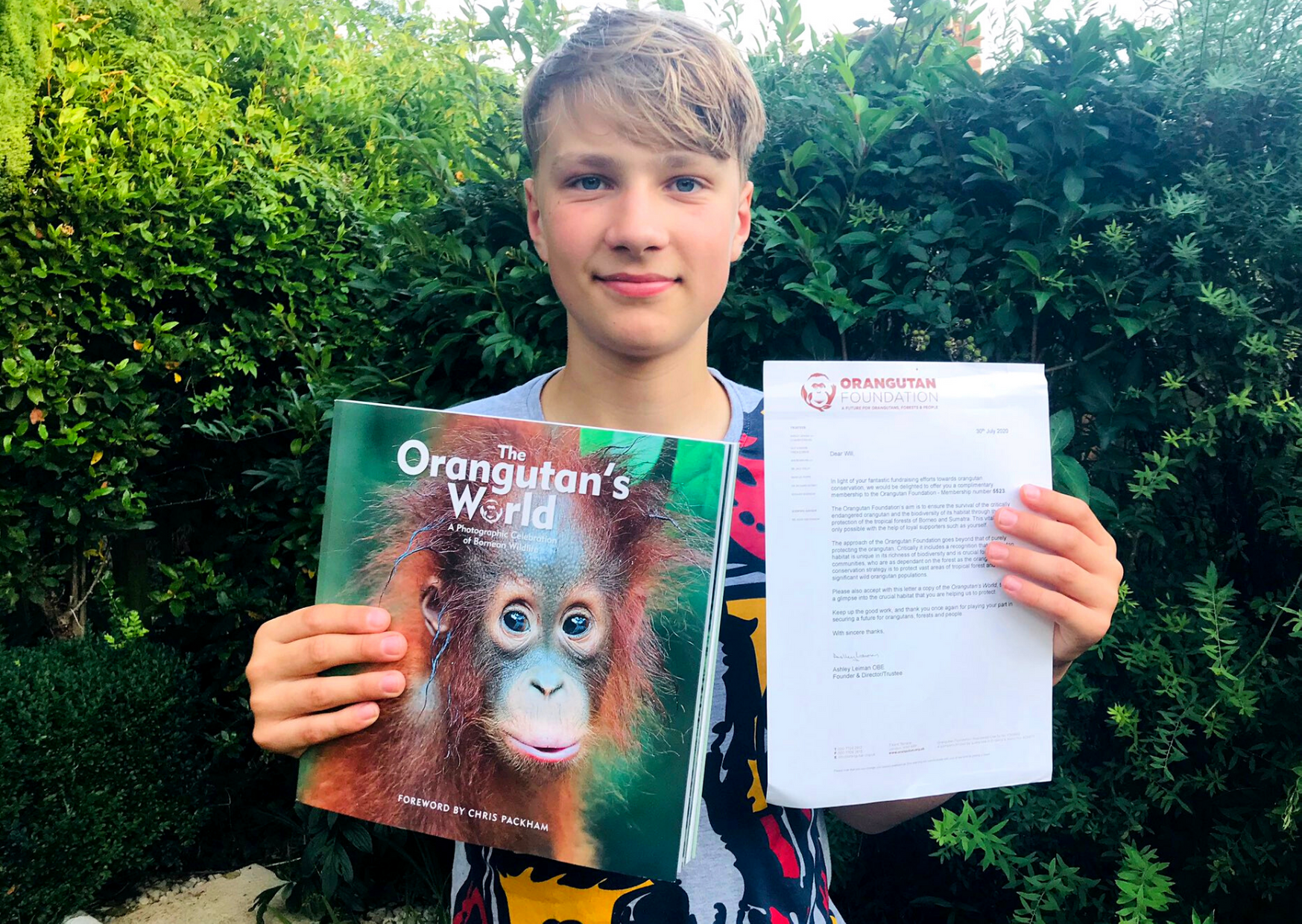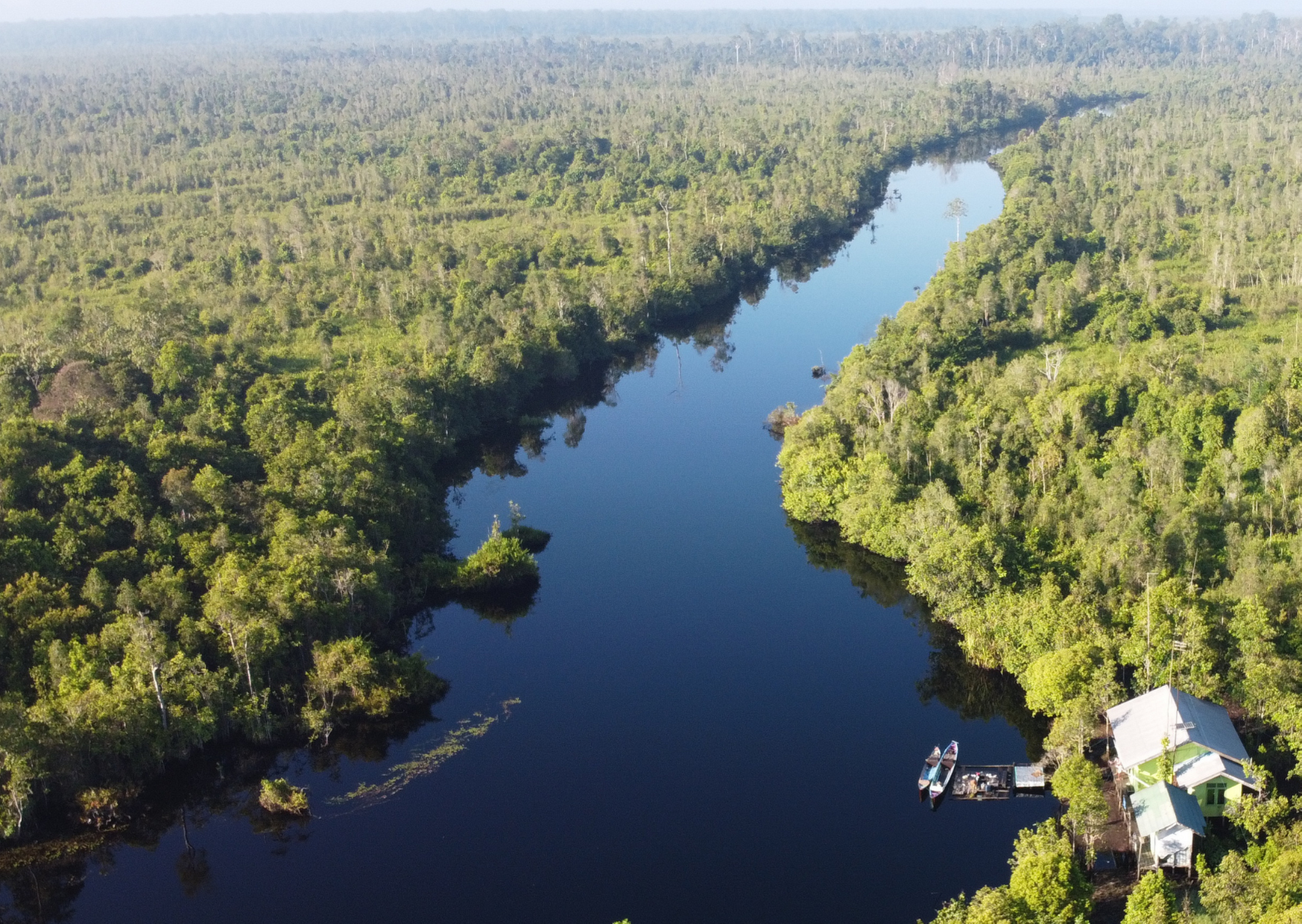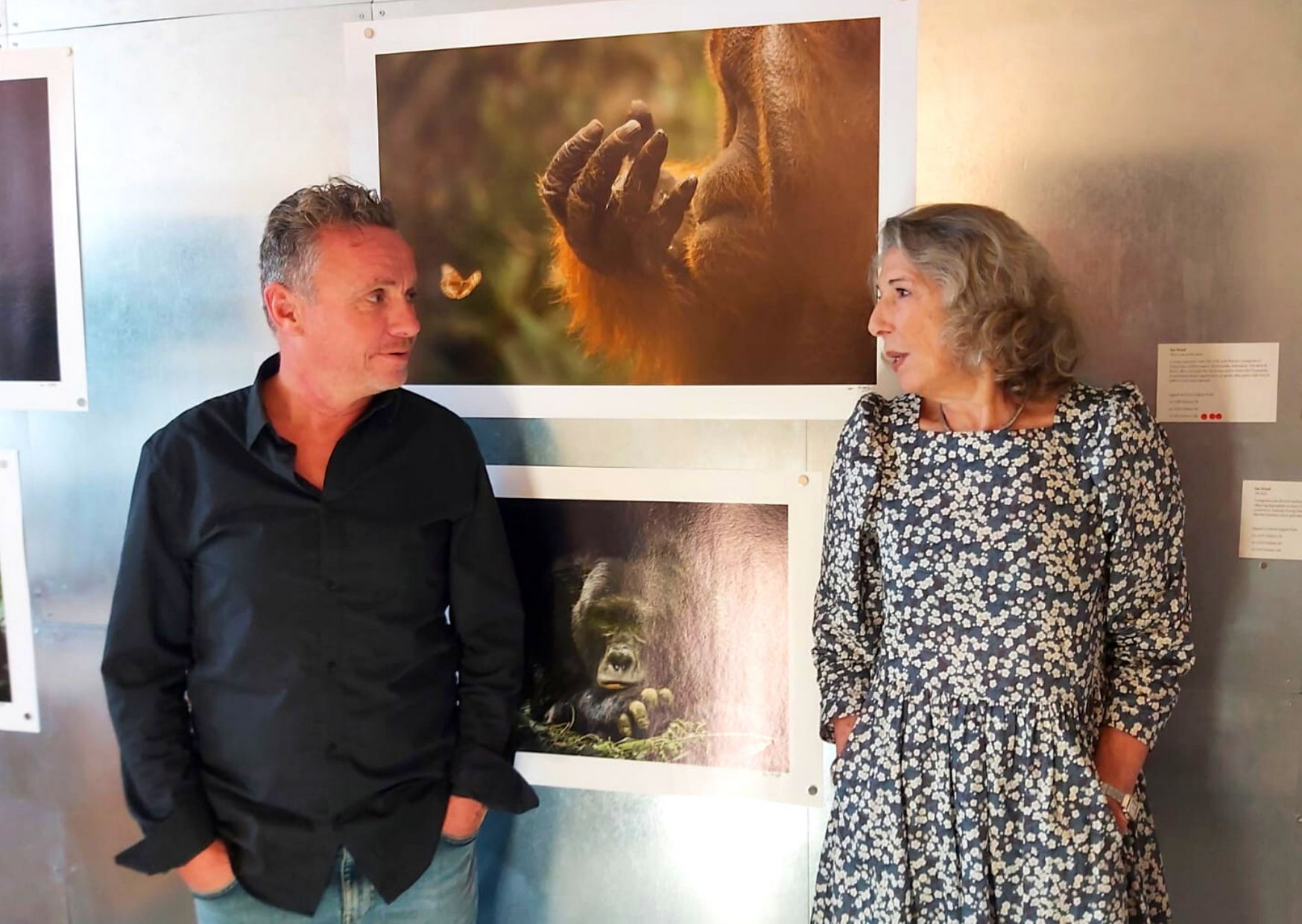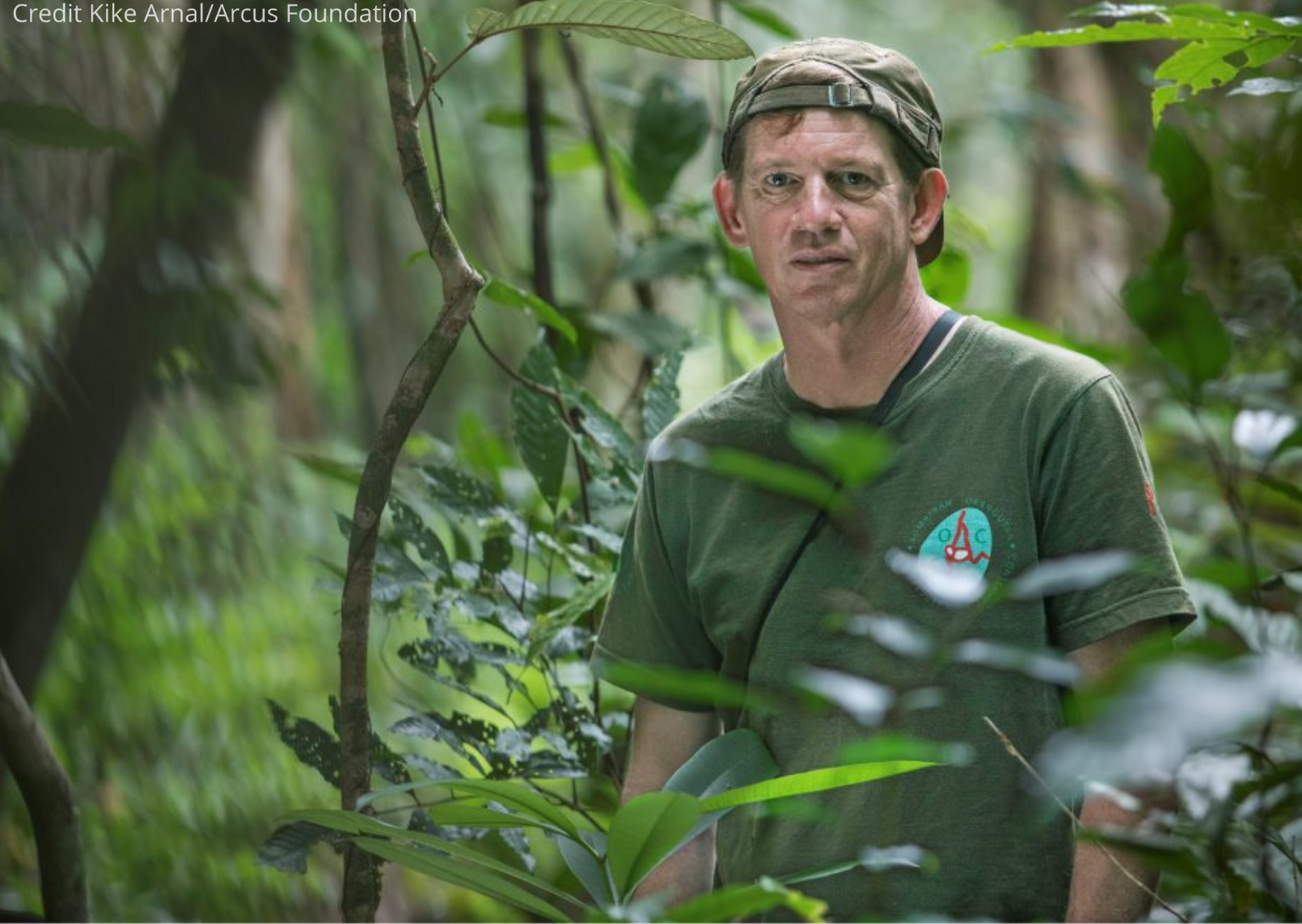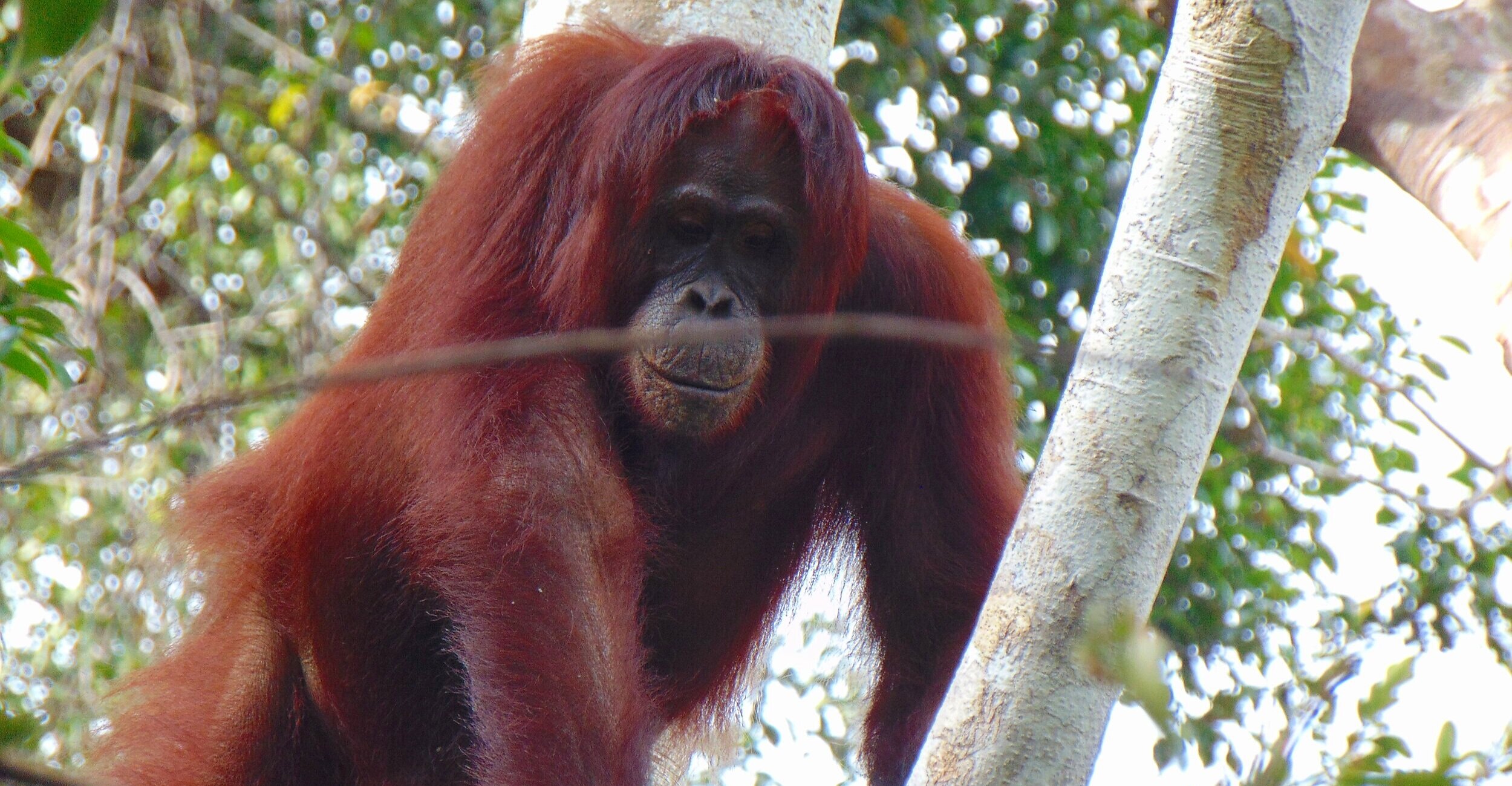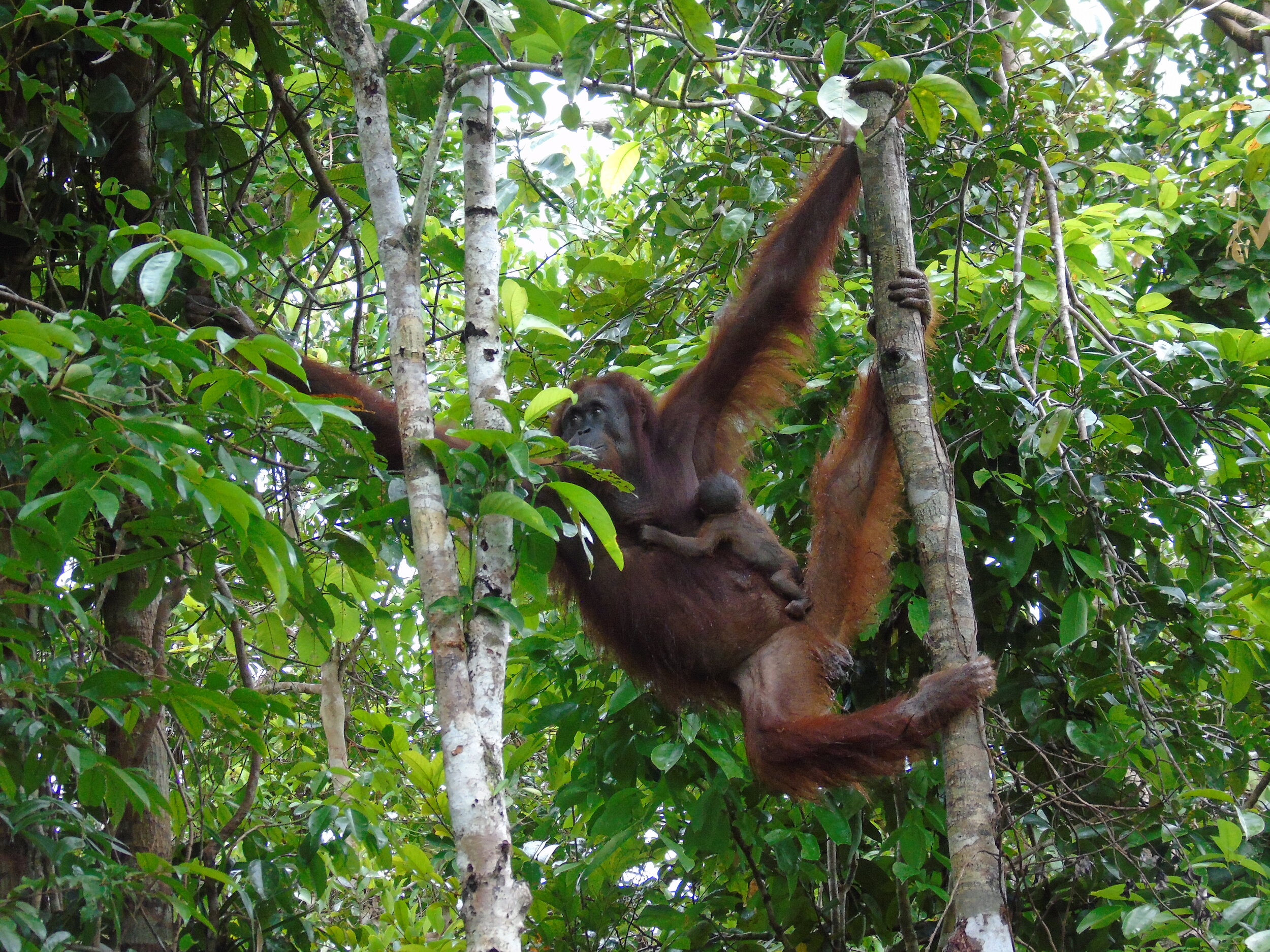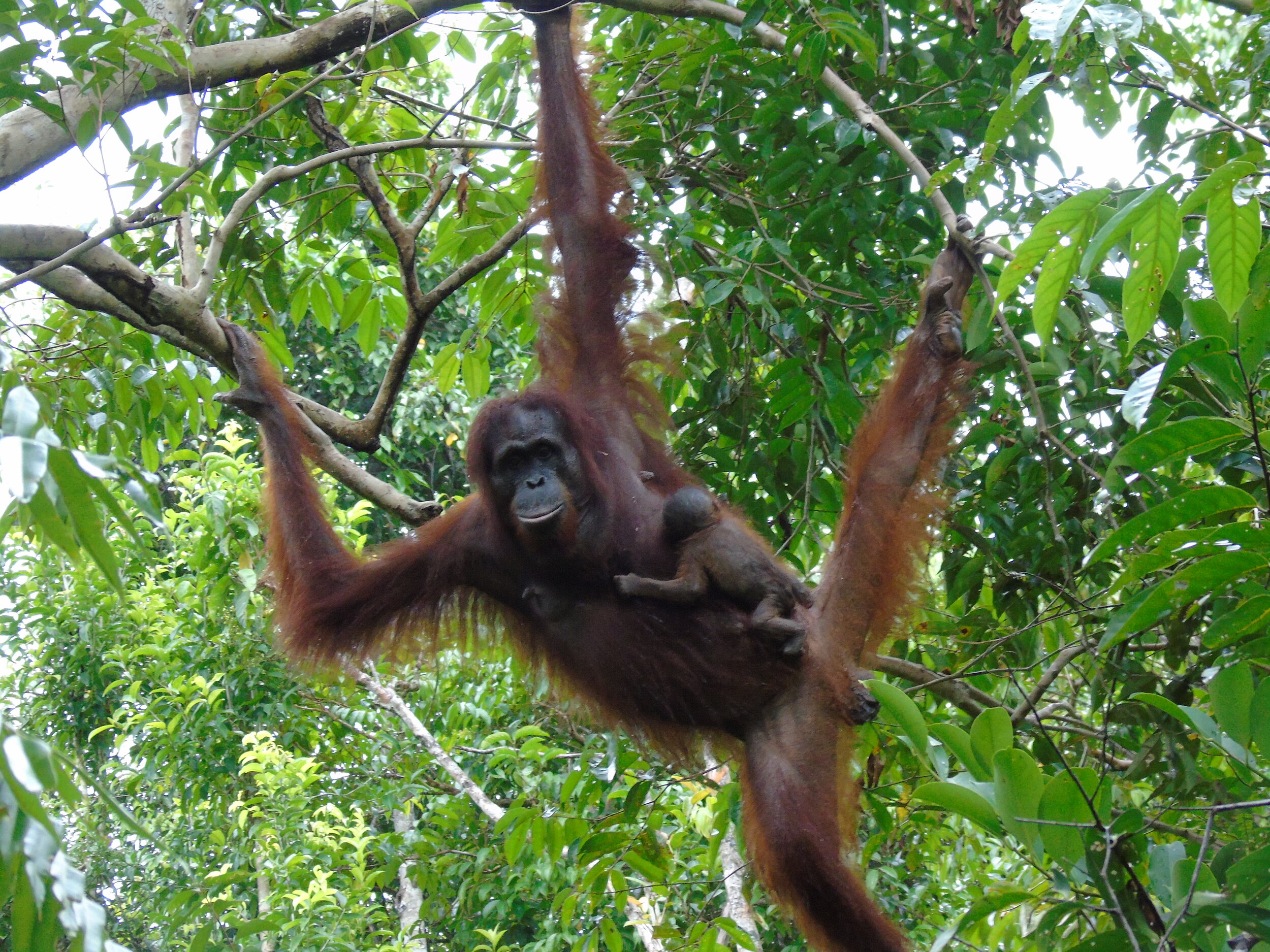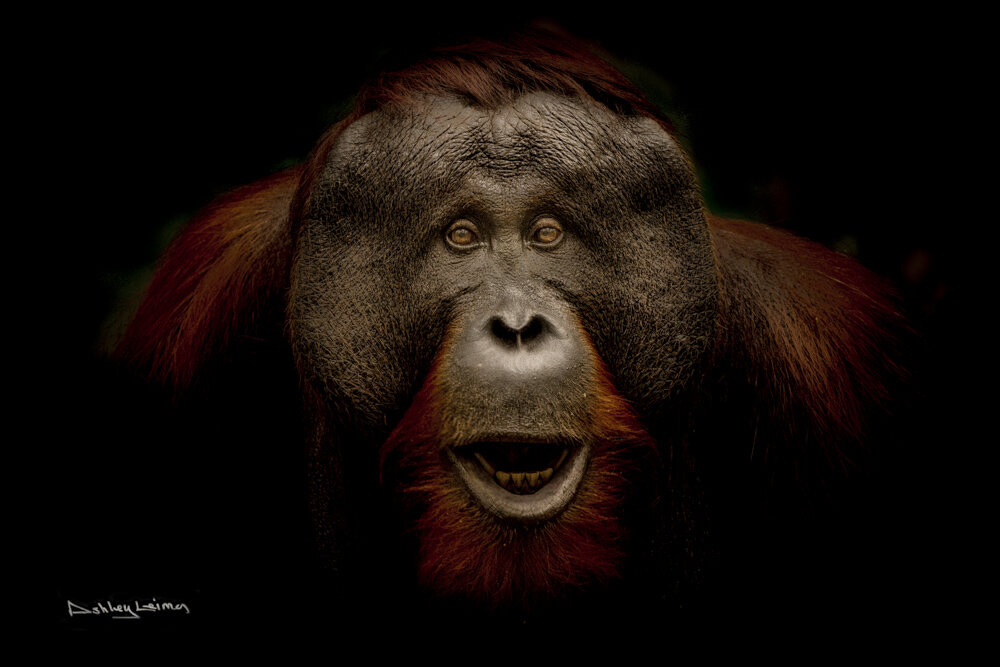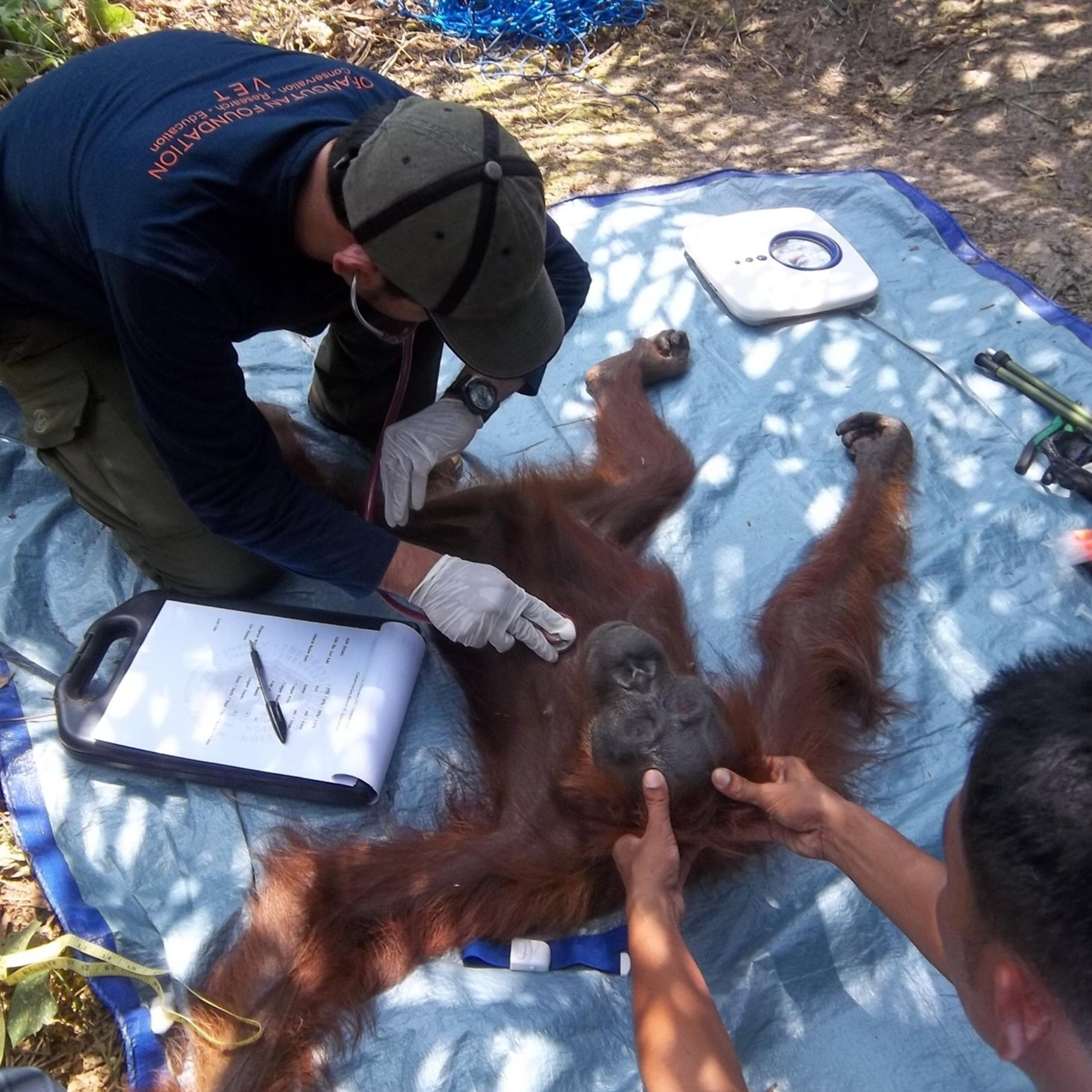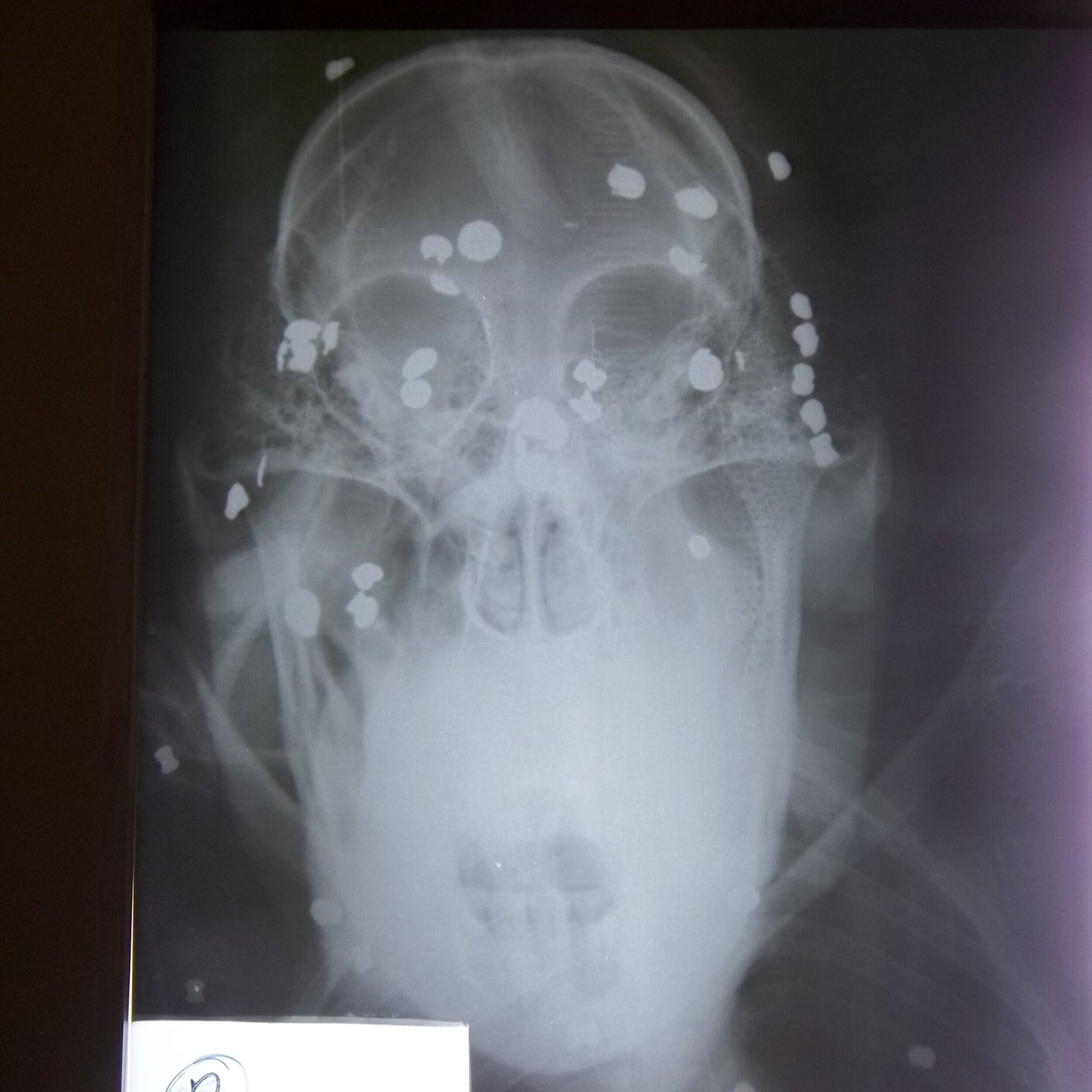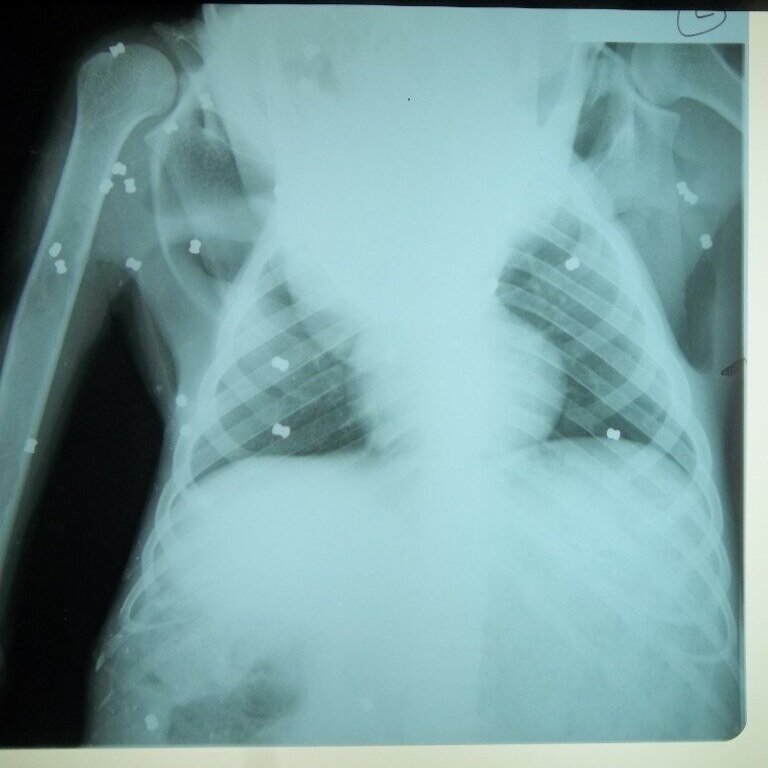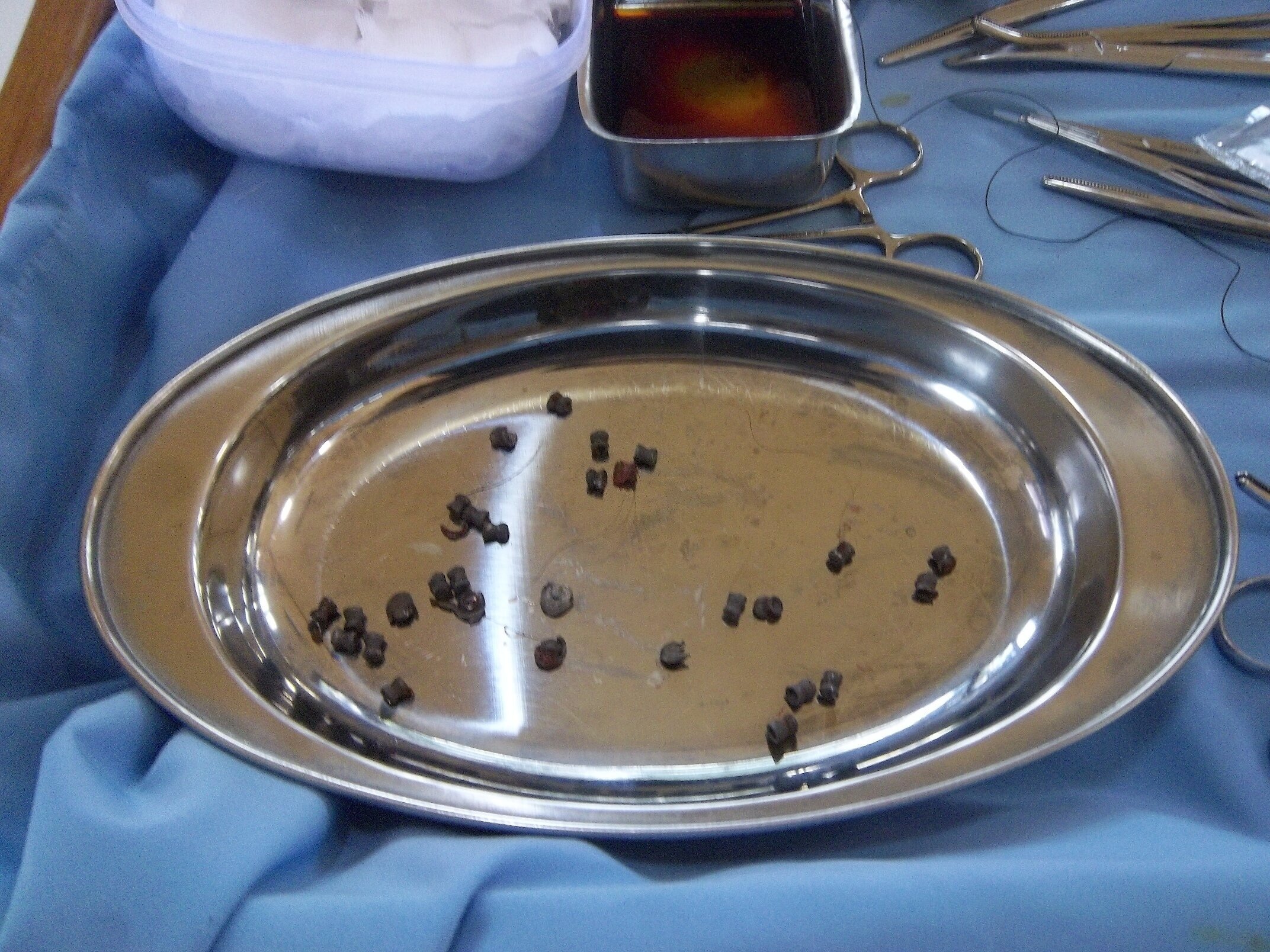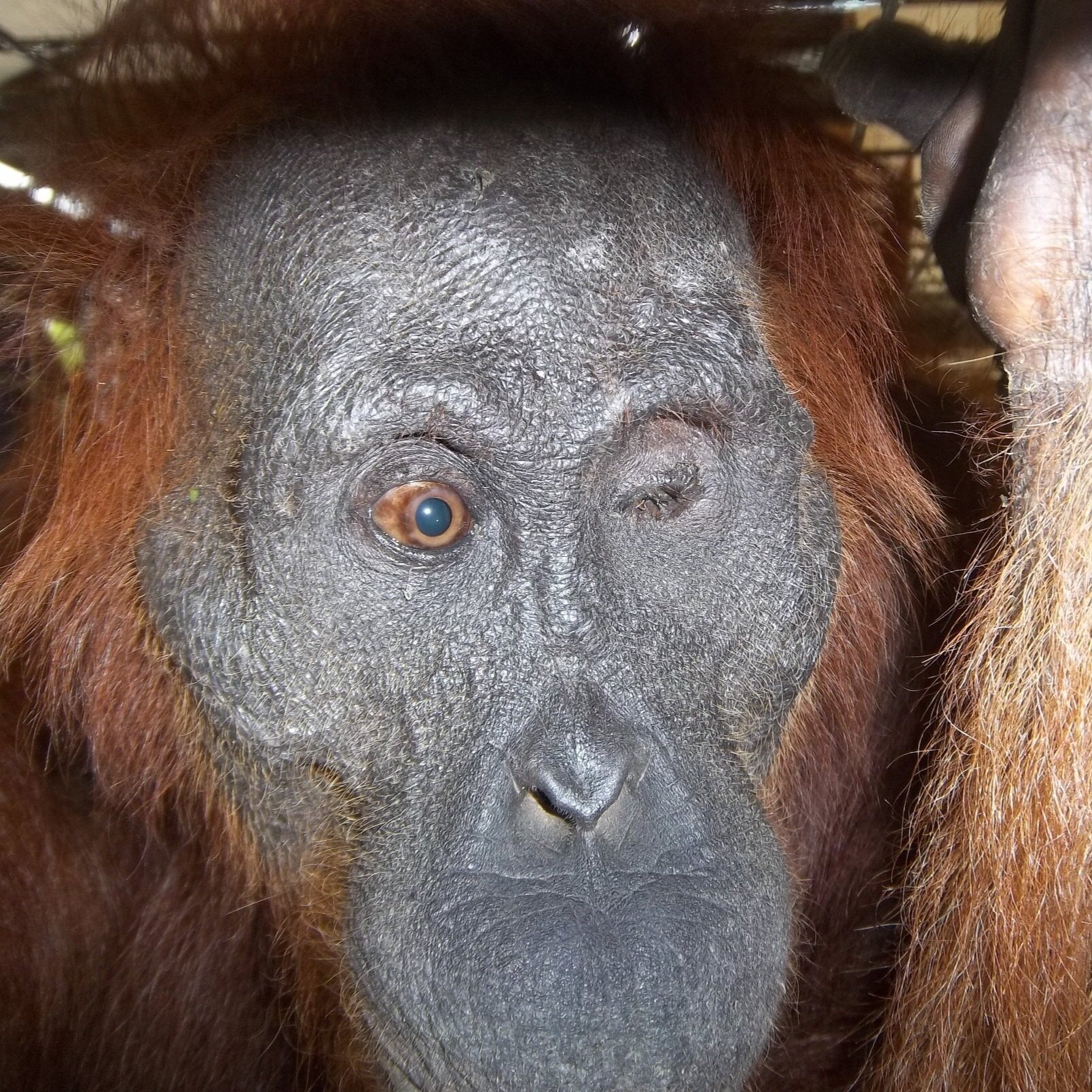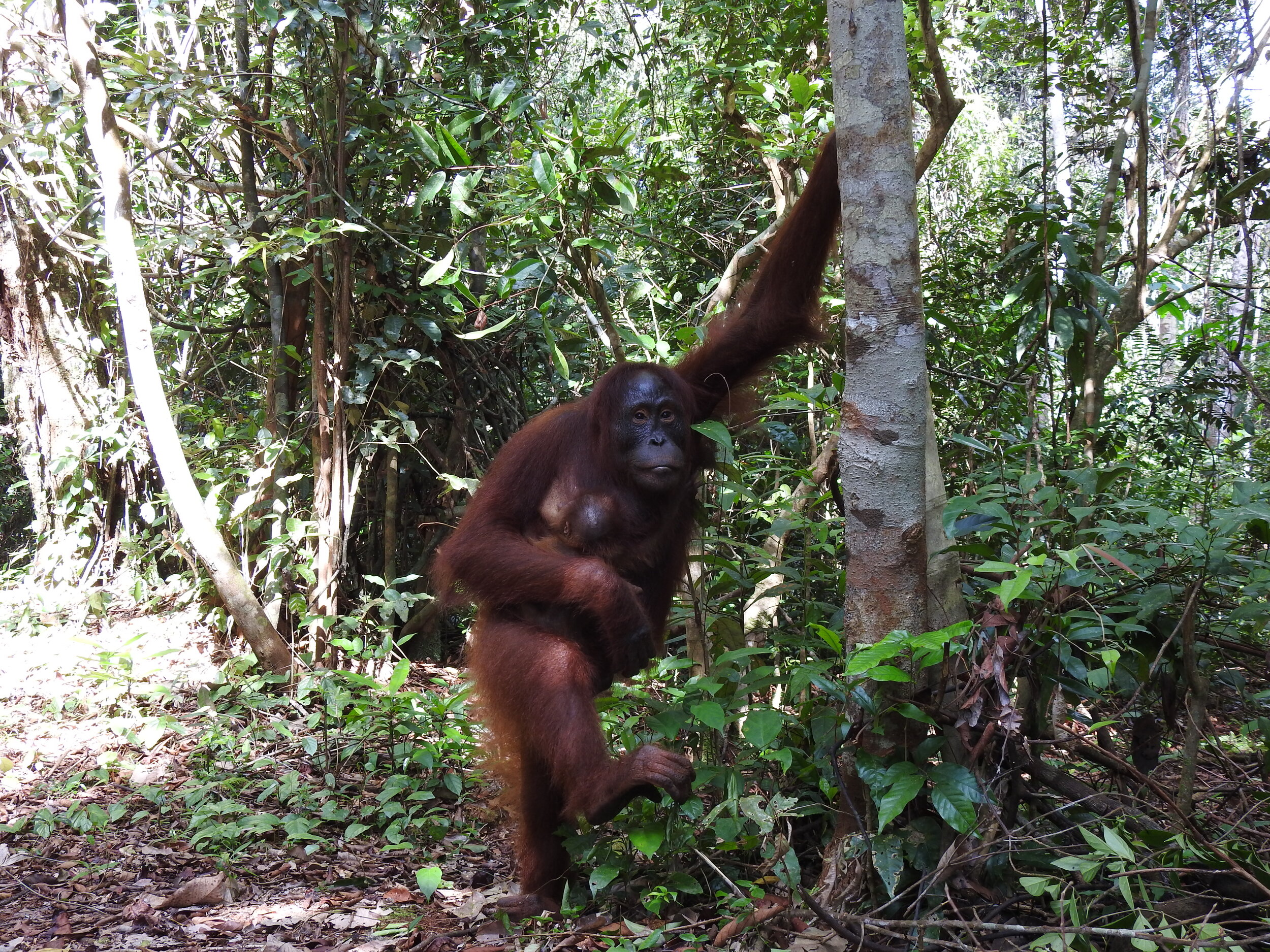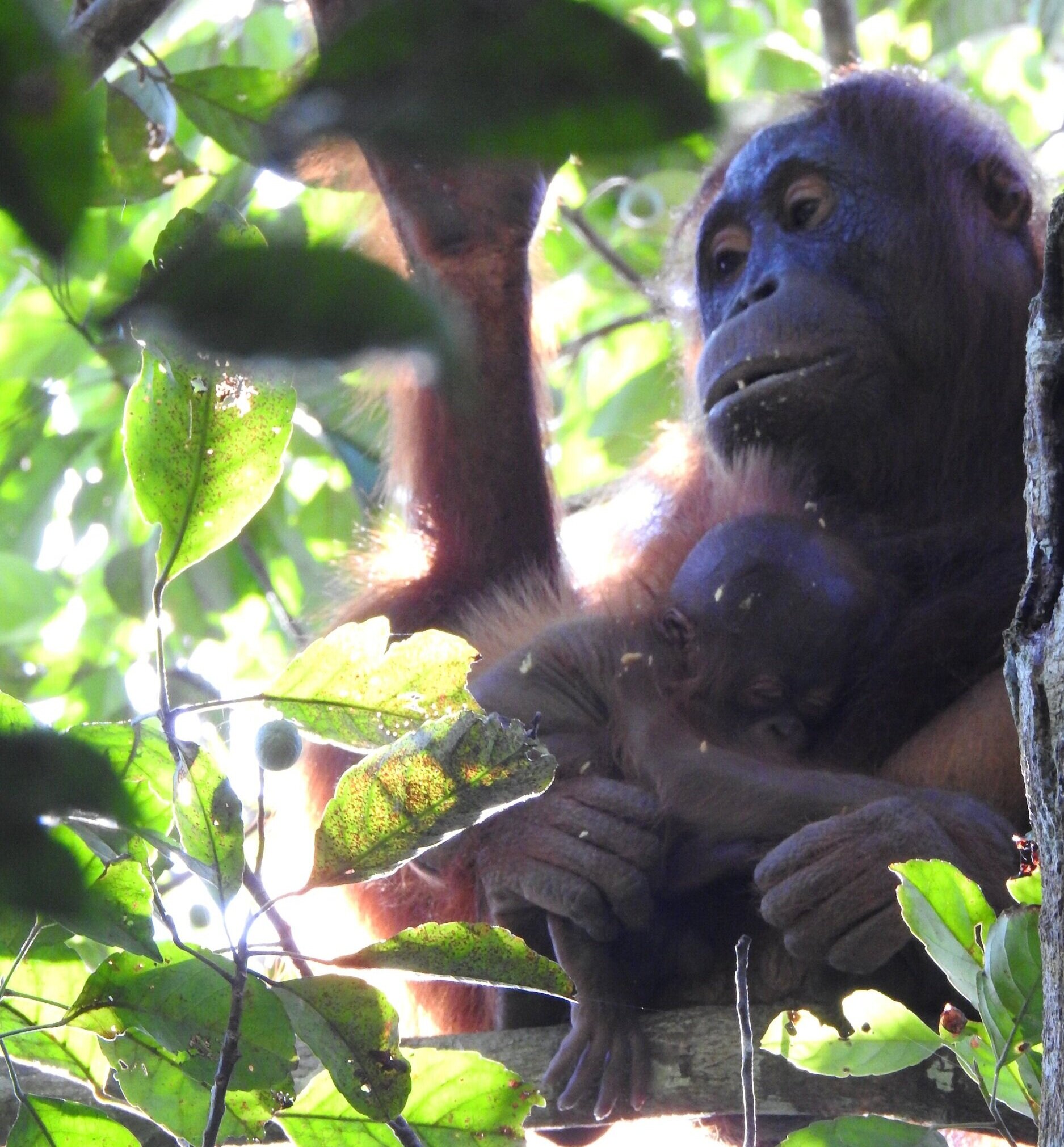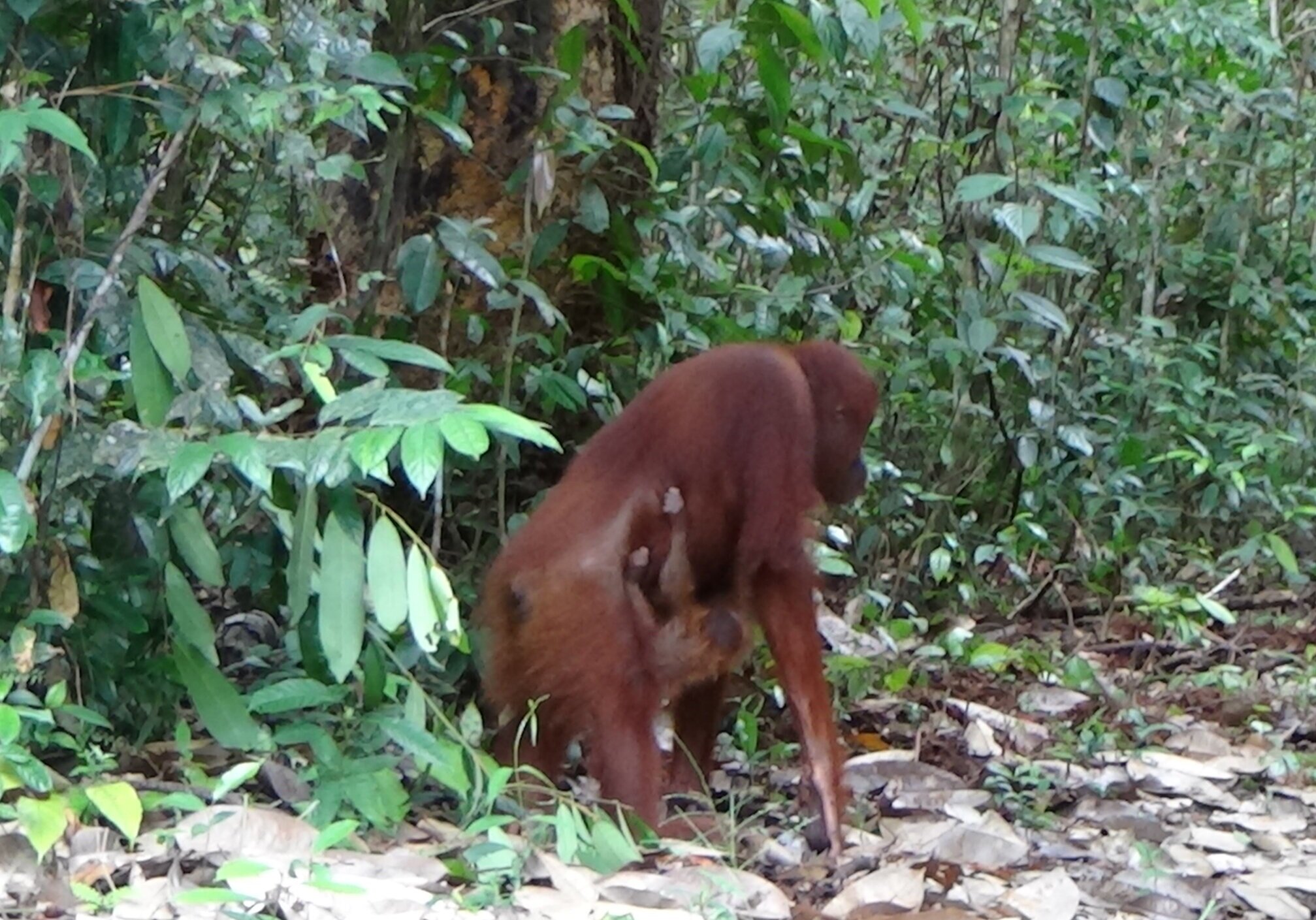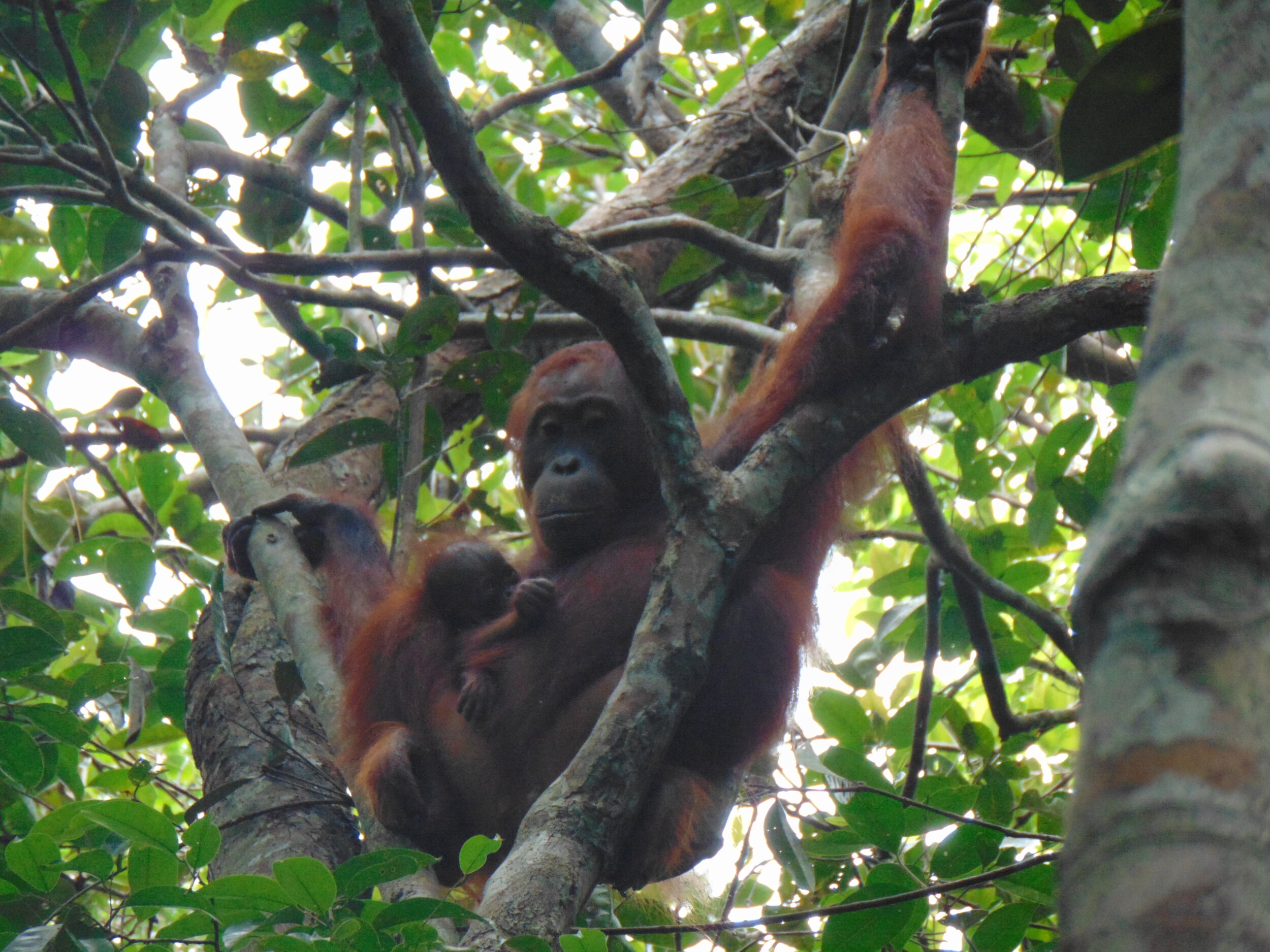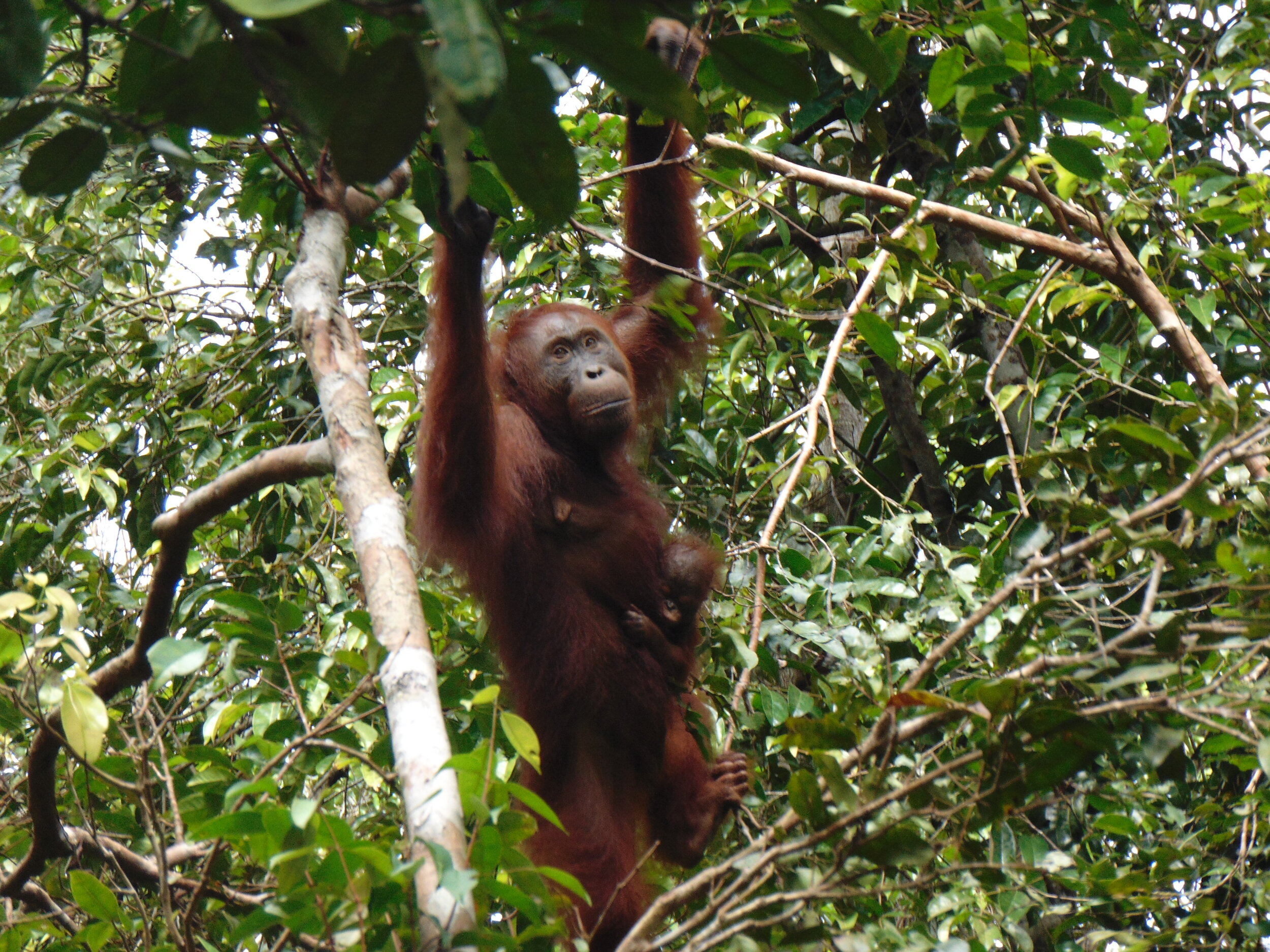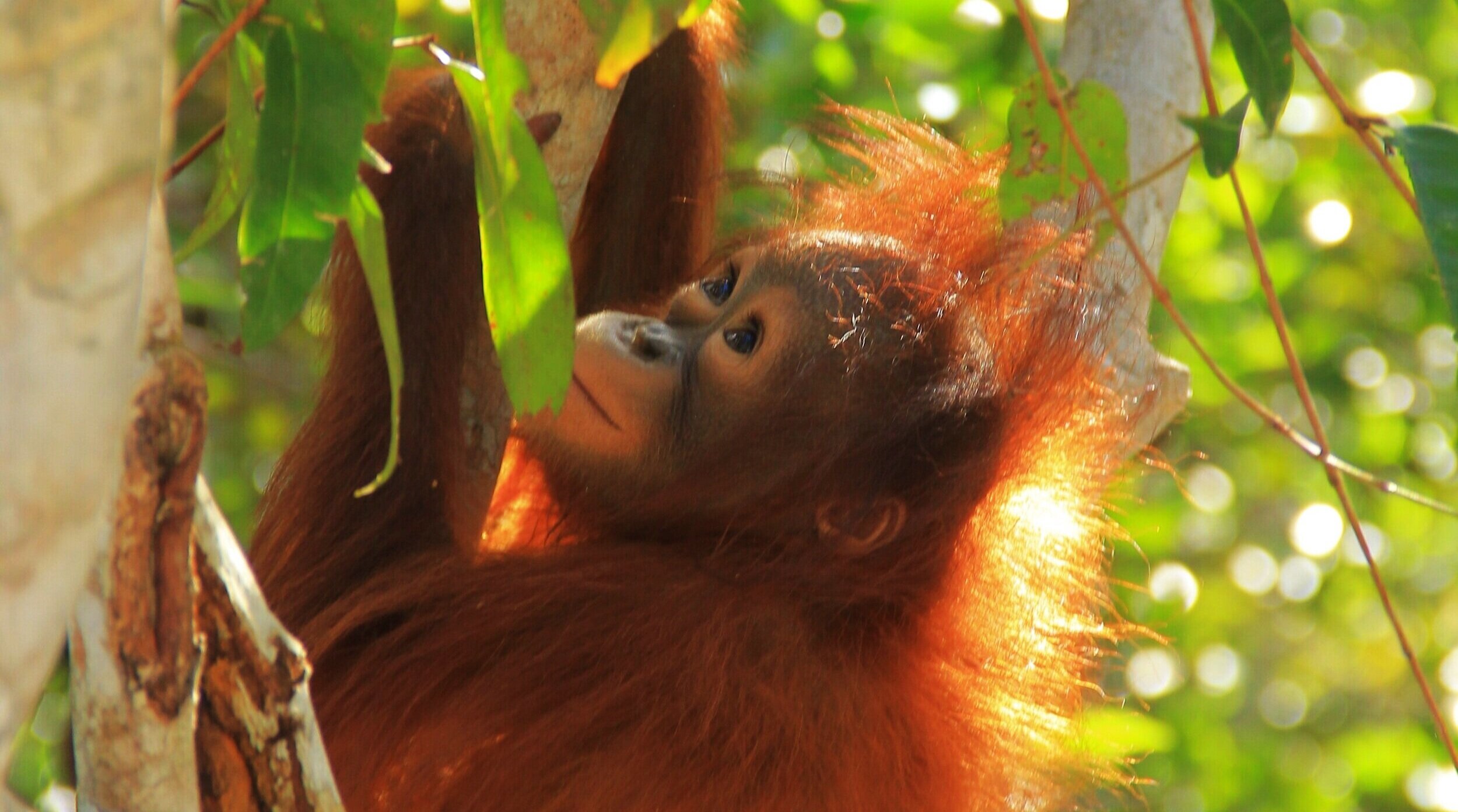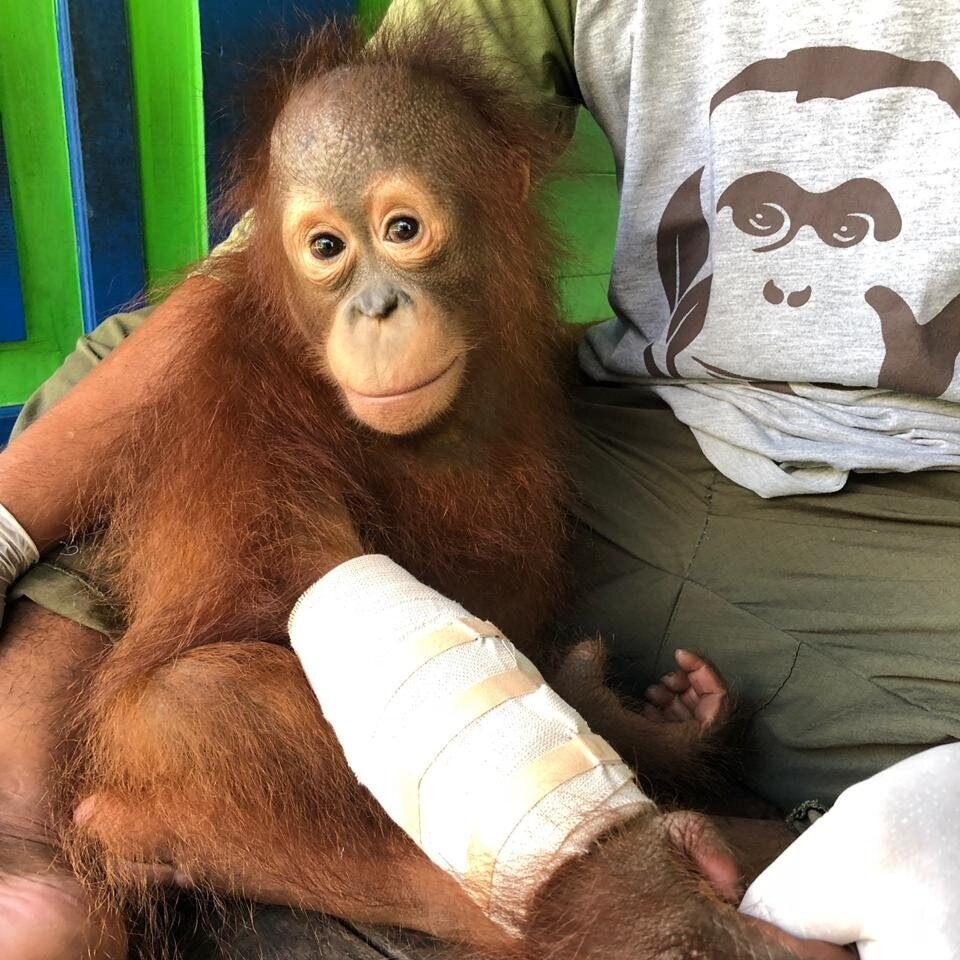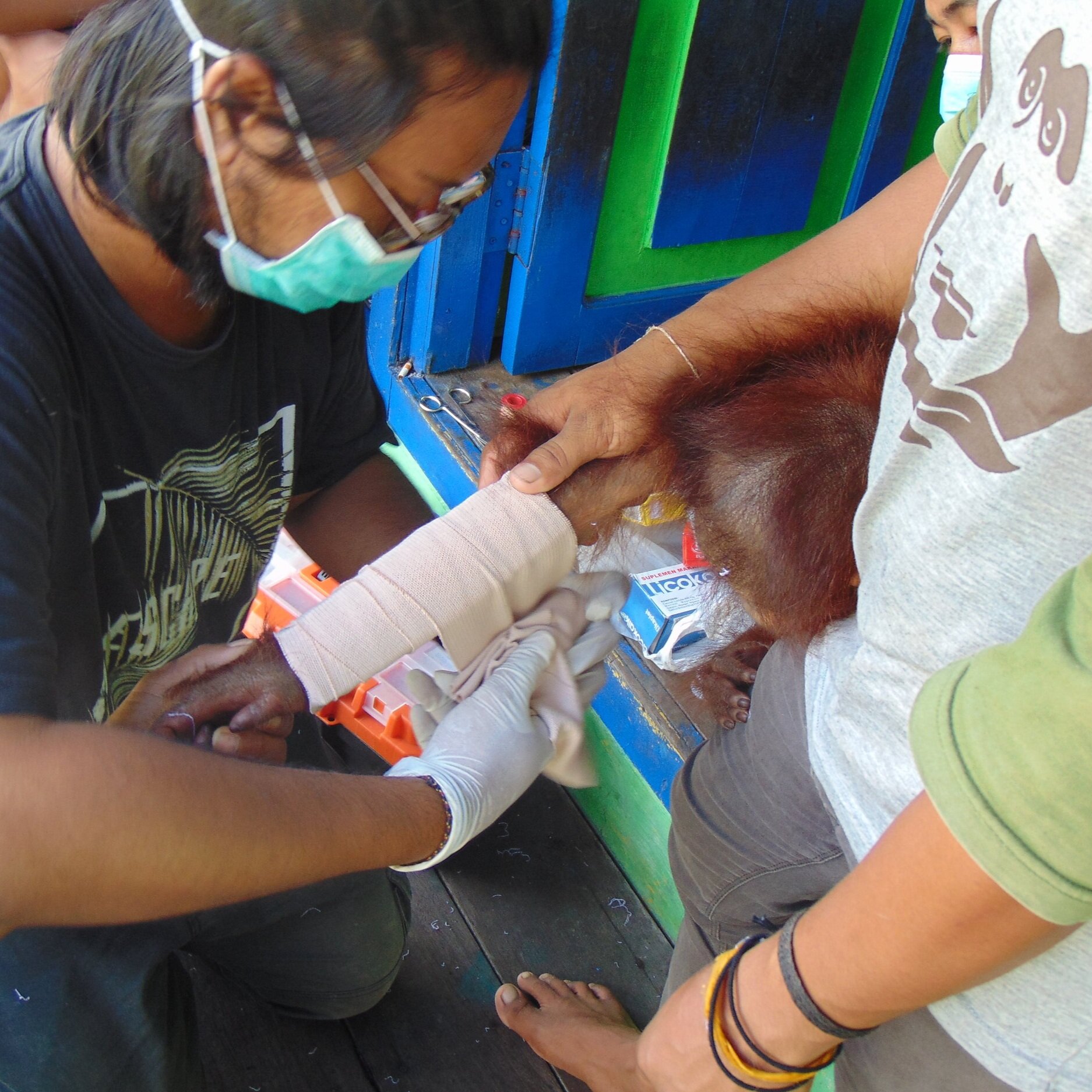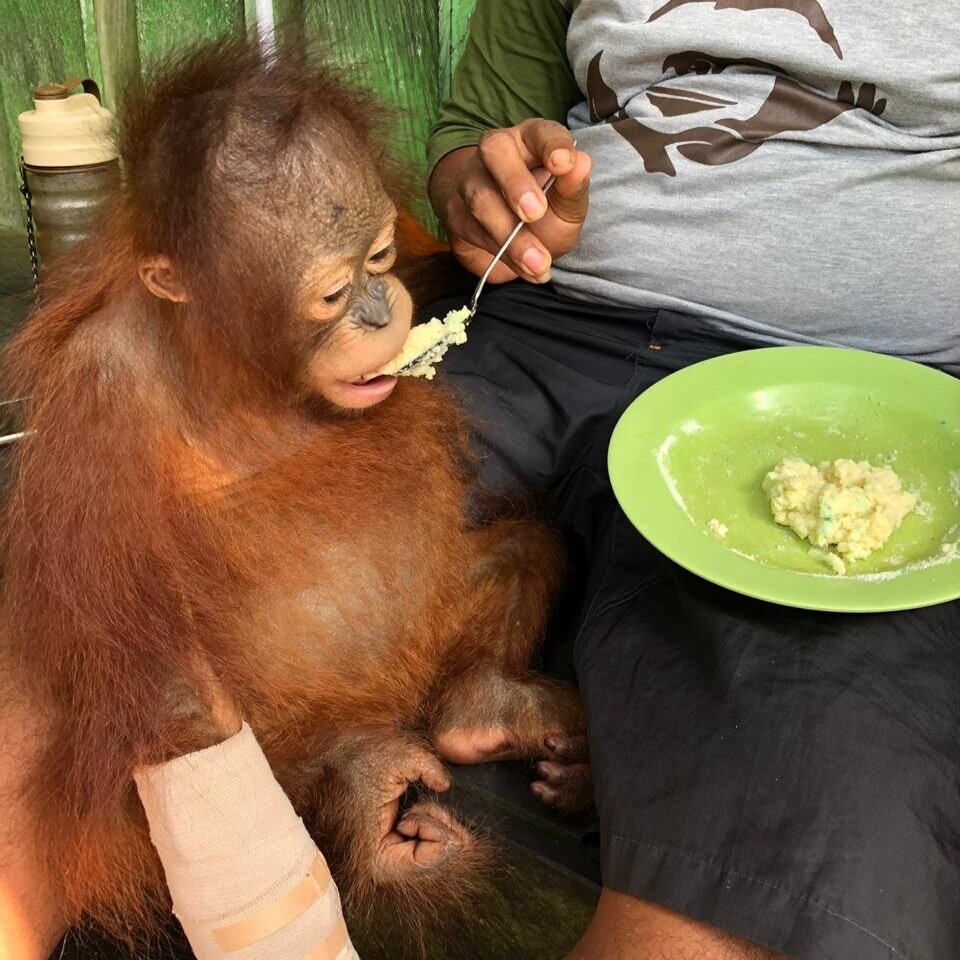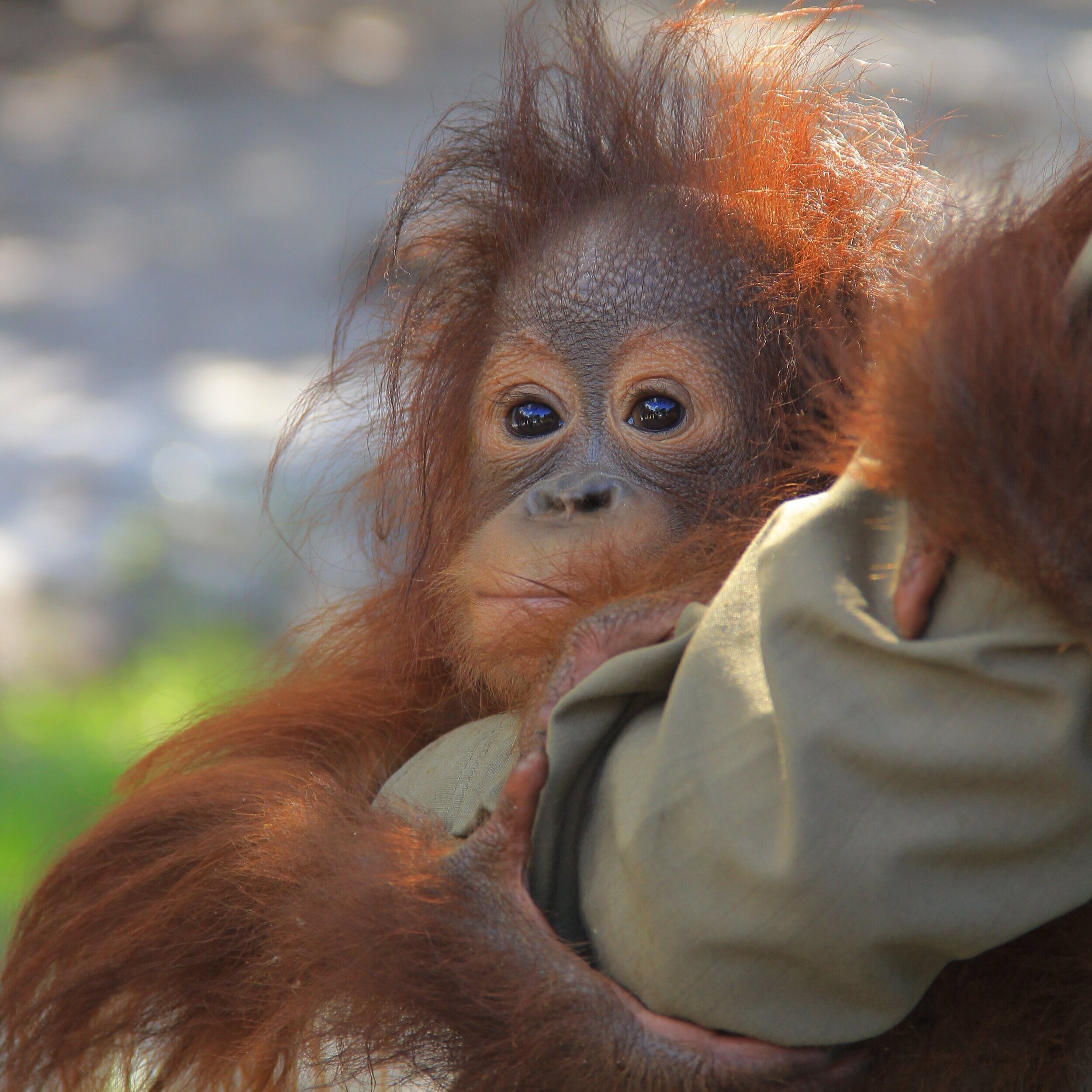This month our field team are delighted to announce the exciting news that wild female orangutan Ilik has successfully given birth!
Ilik shows off her swollen belly a few weeks before giving birth
Ilik’s exact age is unknown as she was translocated to the Lamandau Wildlife Reserve in 2007. It would be fair to say that she feels safe this protected habitat, without the threat of habitat encroachment, as her latest arrival is now her second infant in the forest.
In May 2016, our team were over the moon to see that Ilik had settled into her surroundings and had given birth to her first offspring- a female named Izzy. Tragically however, after a couple of years, Ilik was found carrying the lifeless body of Izzy. It was sad for us to see Ilik not wanting to give up her dead infant. She continued to carry the body around in the trees for a few days until she was ready to let go.
There are many potential hazards which could endanger the life of a young wild orangutan such as pythons, leopards, and wild boars; but Izzy’s death appeared to be inexplicable to our staff. Following a detailed necropsy there appeared to be no wounds or damage to Izzy’s internal organs, so the cause of death for Ilik’s first infant remains unknown. An unfortunate yet heart-breaking quirk of nature perhaps.
Knowing Ilik’s history, we were even more thrilled to see that this month she has given birth again in the Reserve. Our team at Camp Gemini noticed recently that Ilik ventured deep into the forest away from camp, only to return four days later with an infant holding on tightly. The first recorded birth of 2021 and eighth born in the Reserve in the past 12 months!
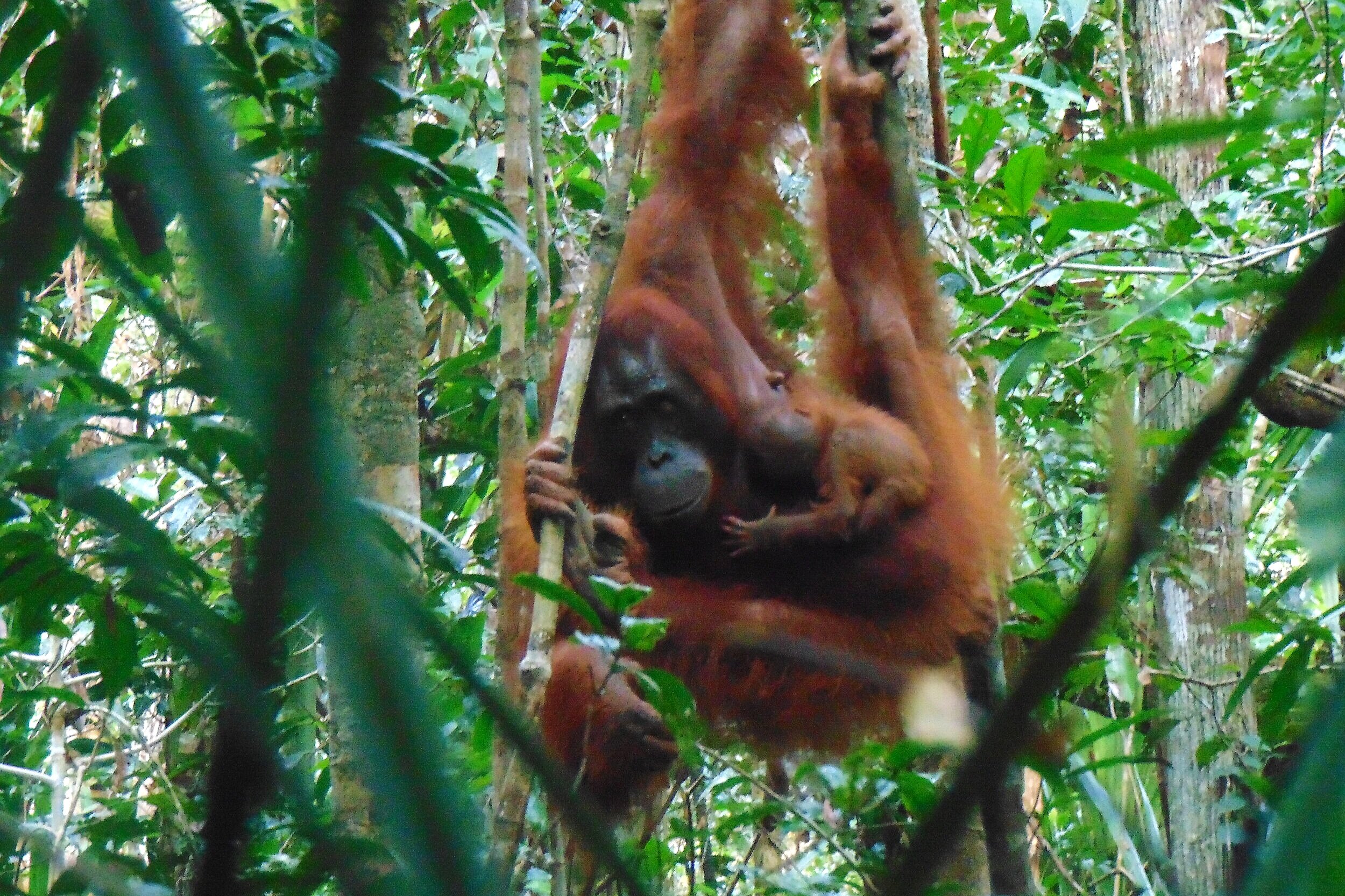
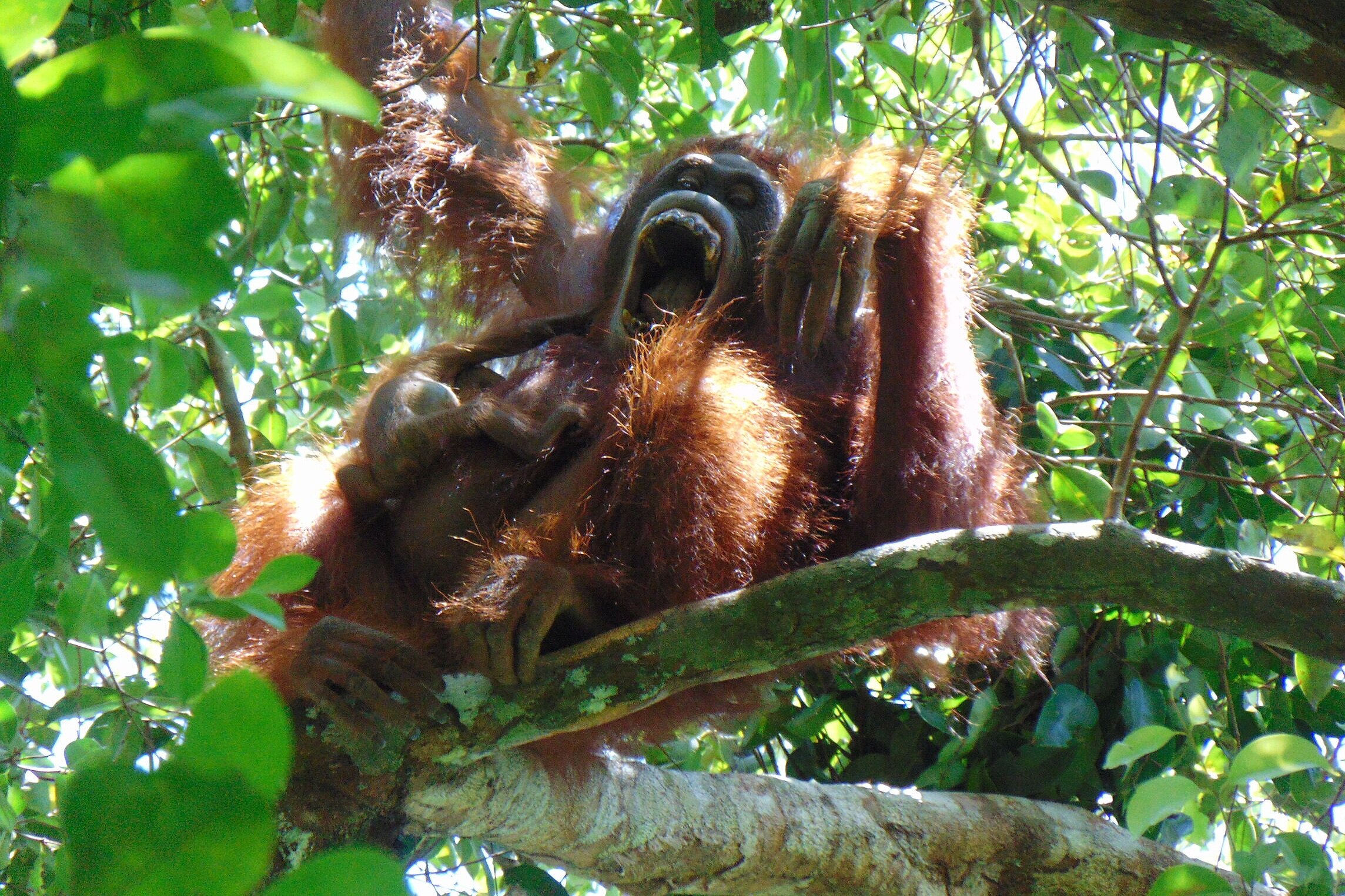

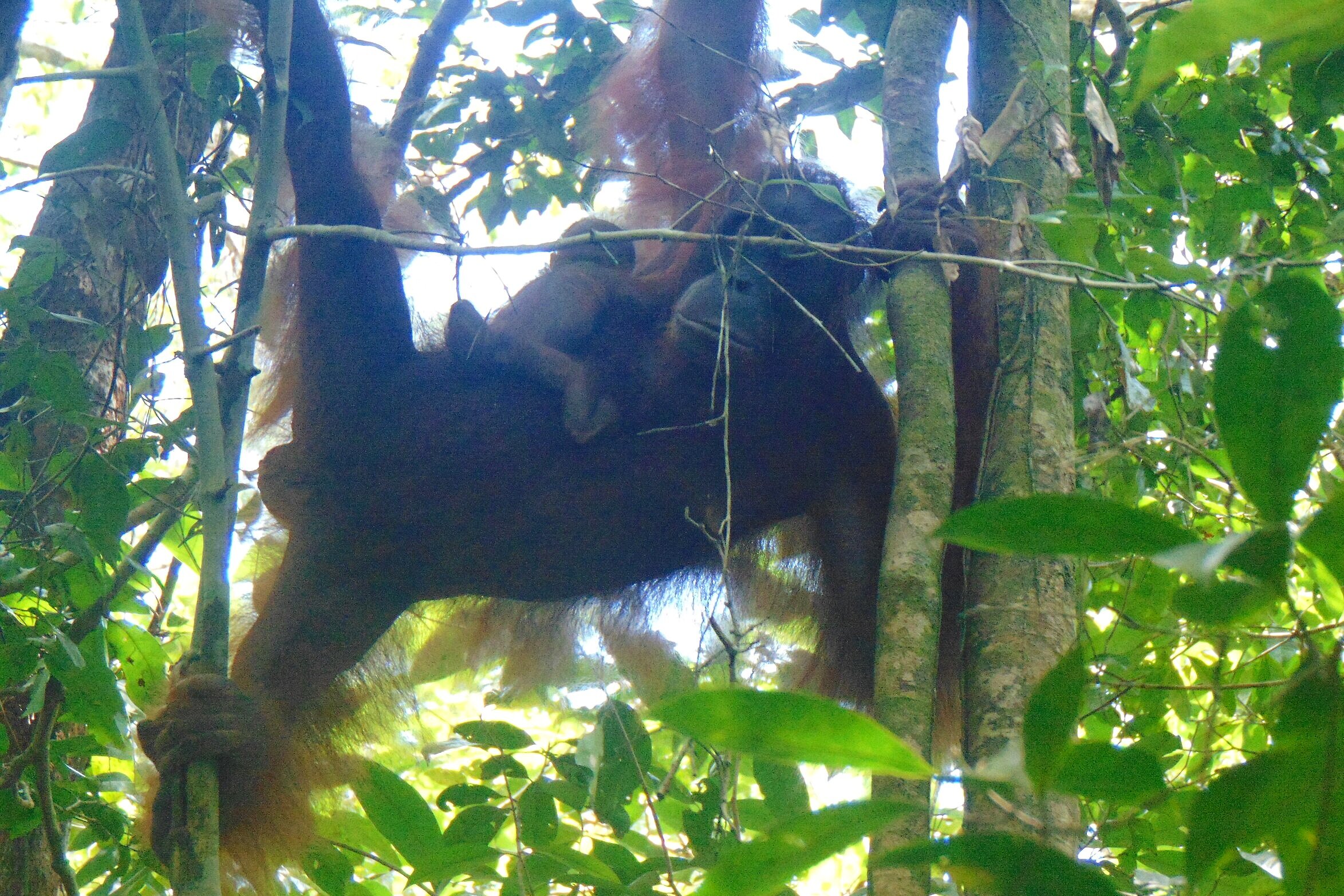
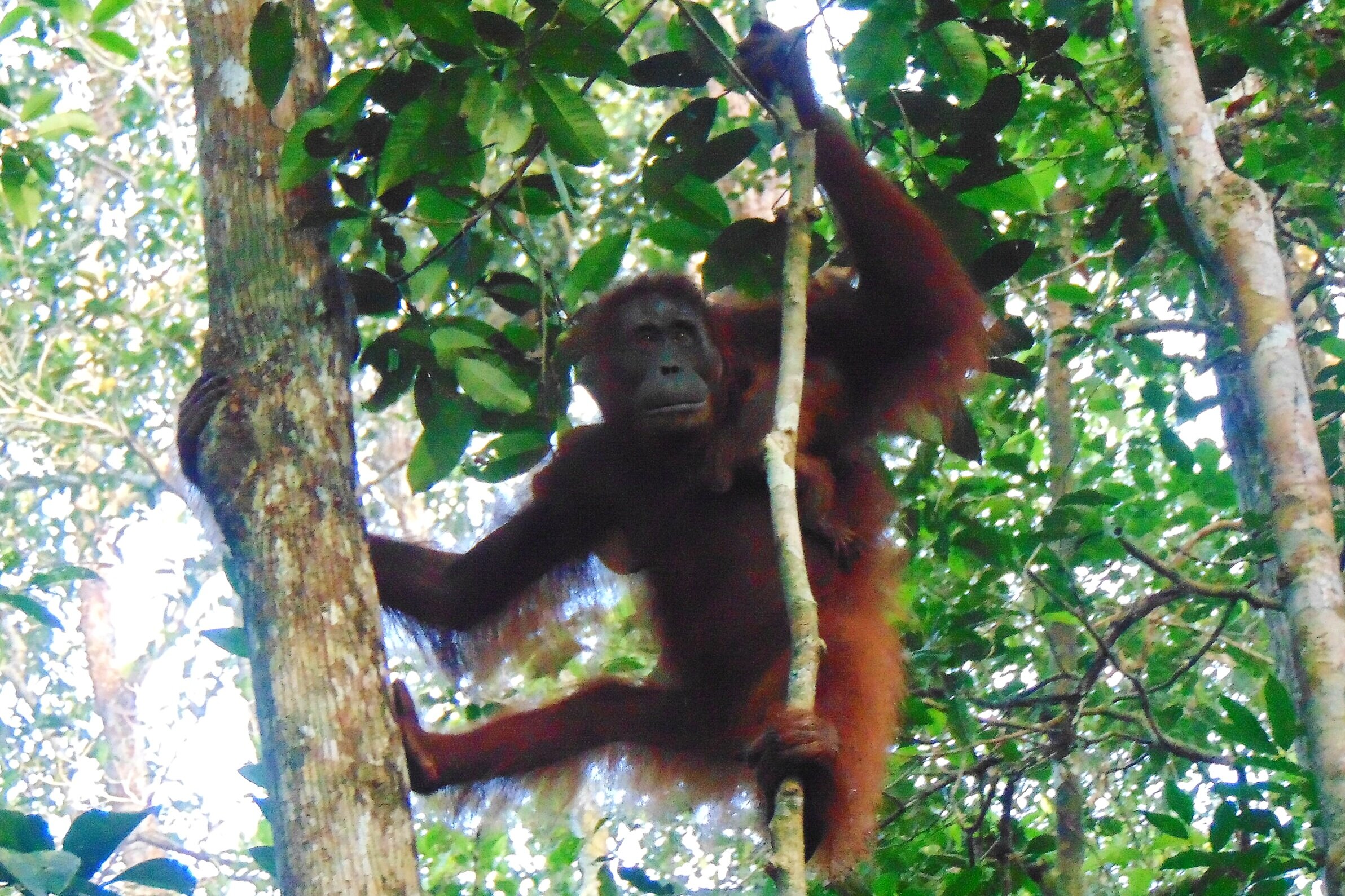

Despite Ilik losing her first born, we are confident that this experience will hold her in good stead to care for her newest arrival. In the meantime, it’s heart-warming to see that the pair seem happy climbing in the trees around camp. Currently Ilik is being followed by a member of our field team who has reported back that both are looking well and the infant is still so tiny that we cannot yet identify the sex.






